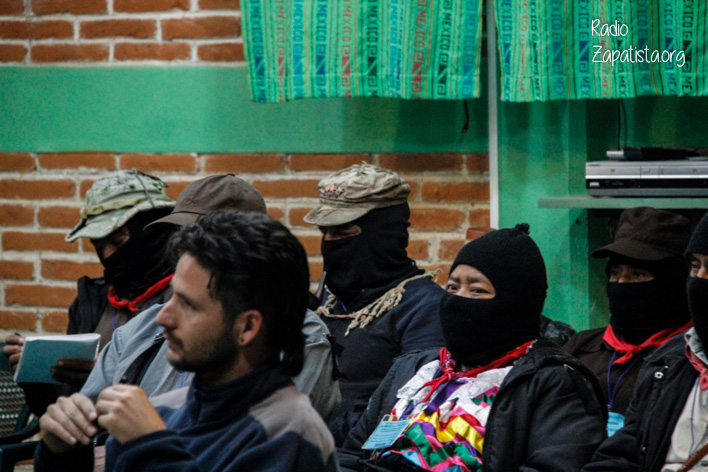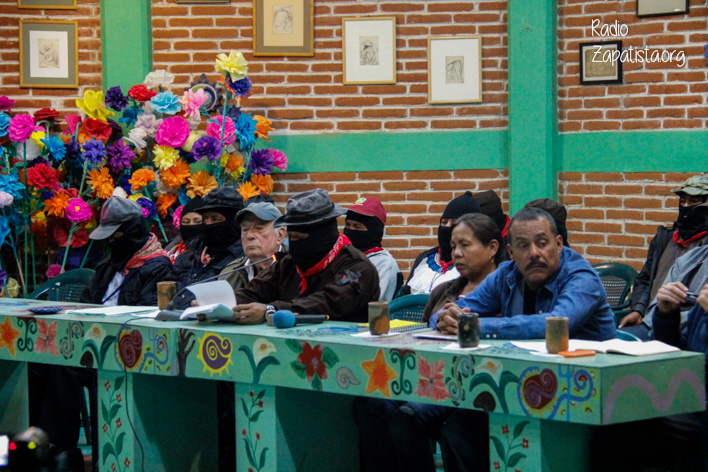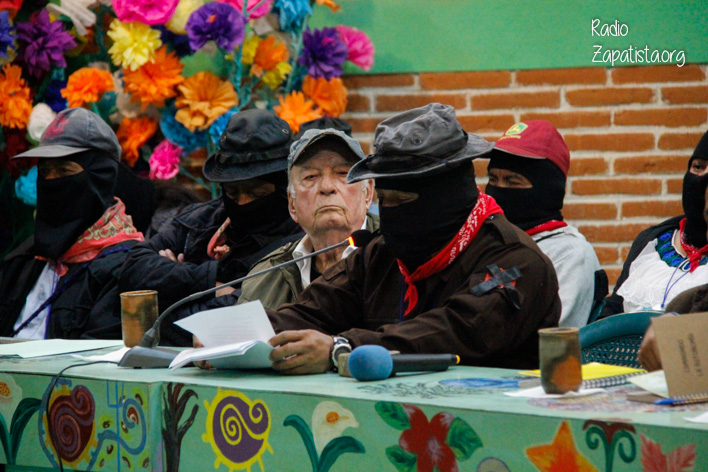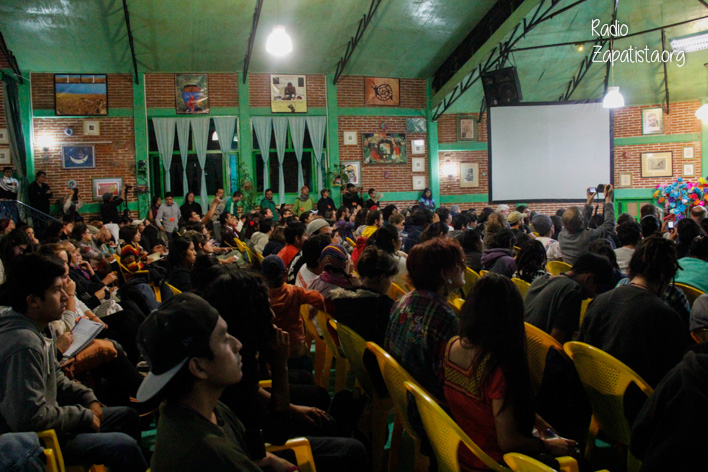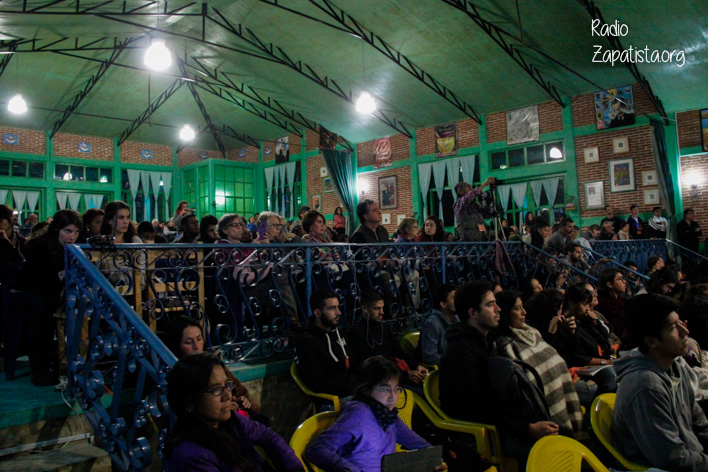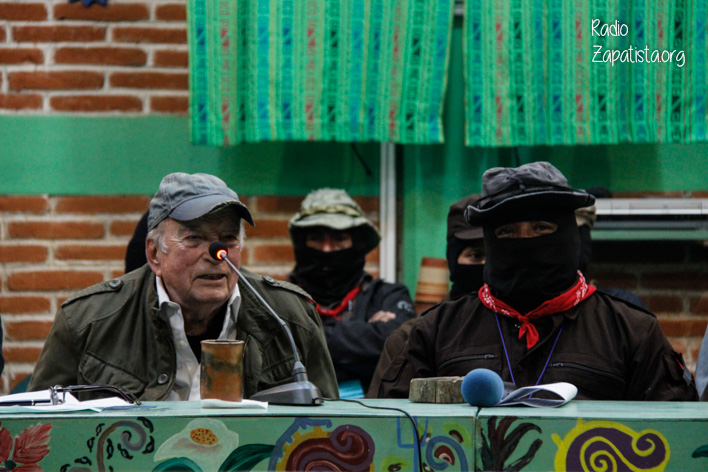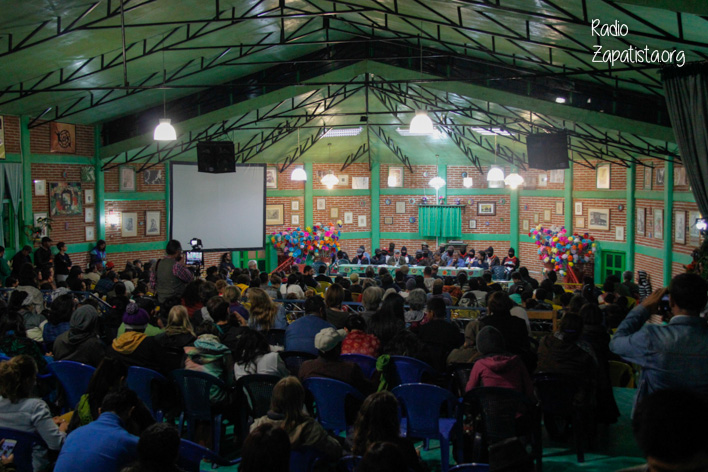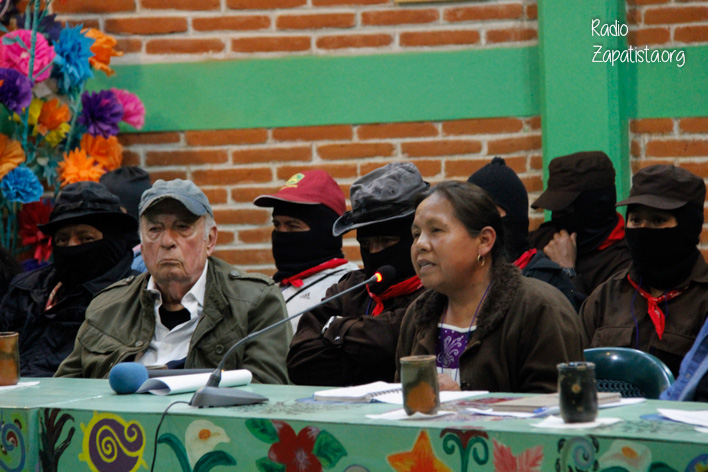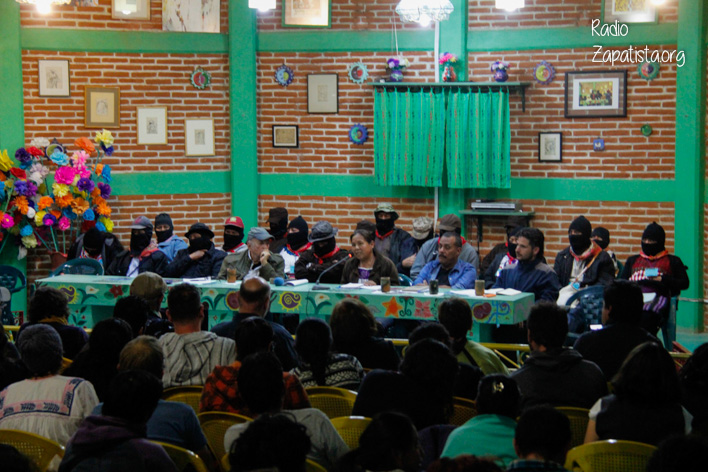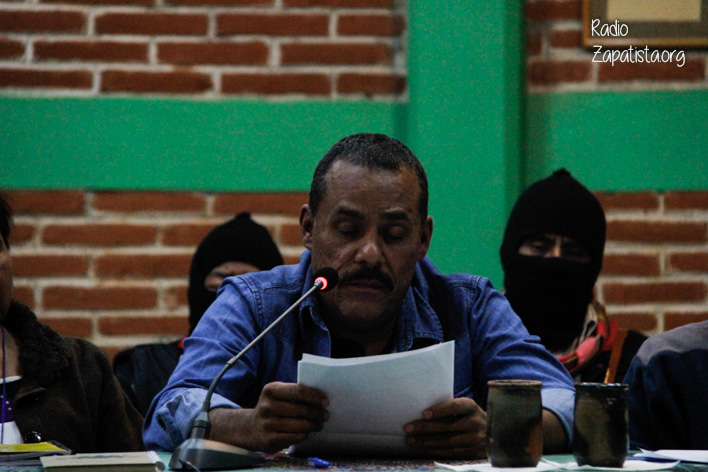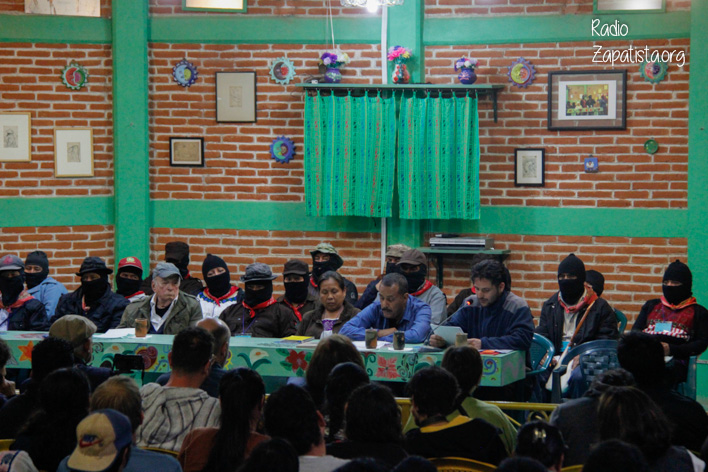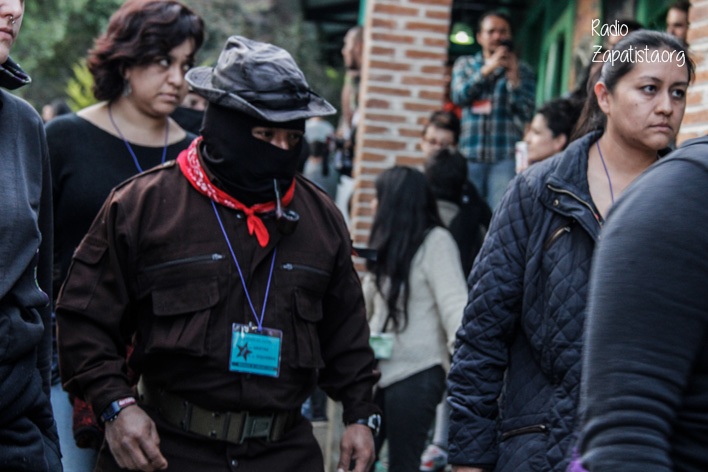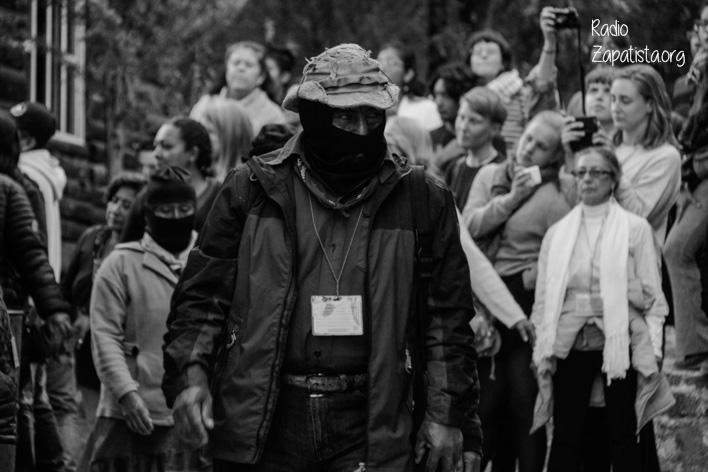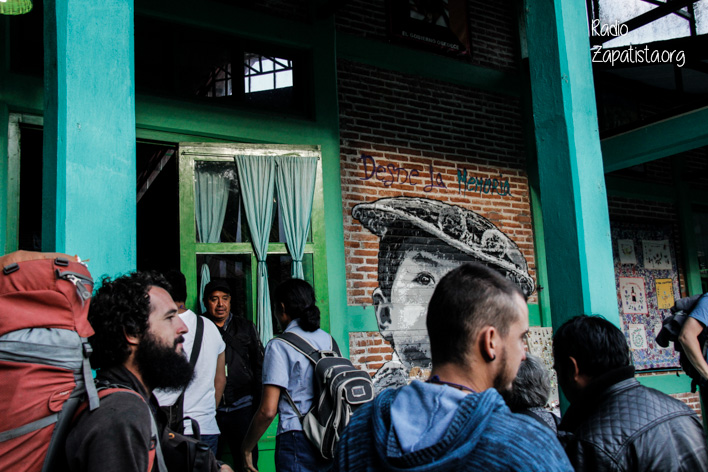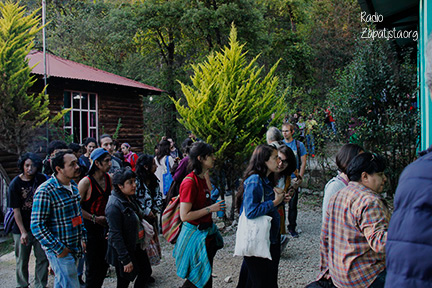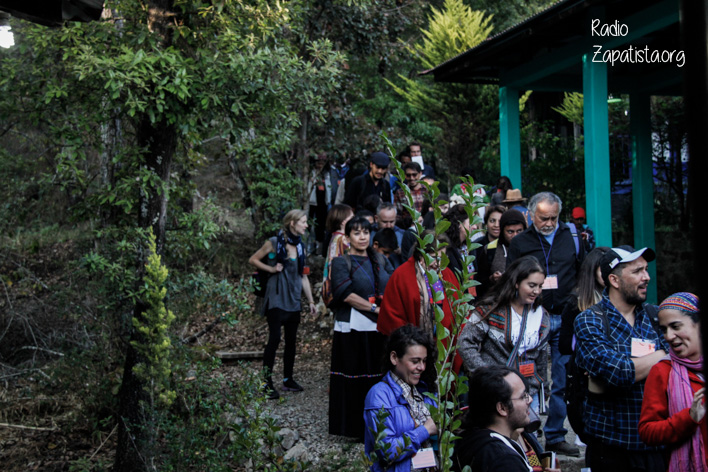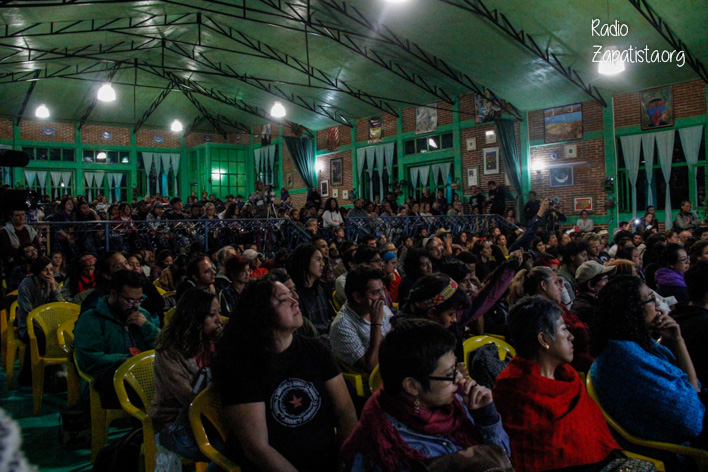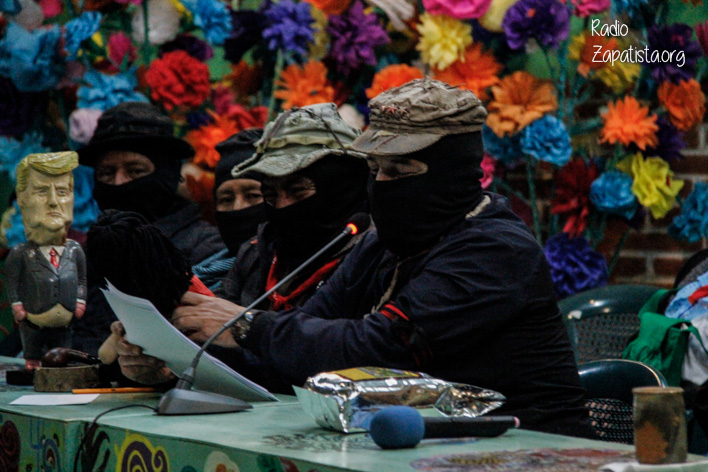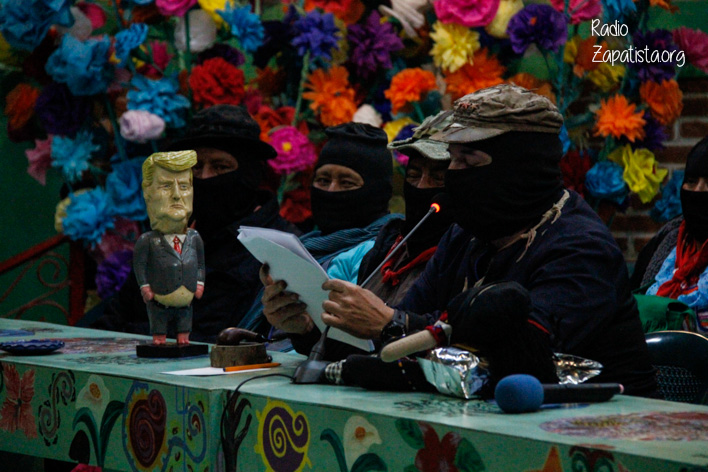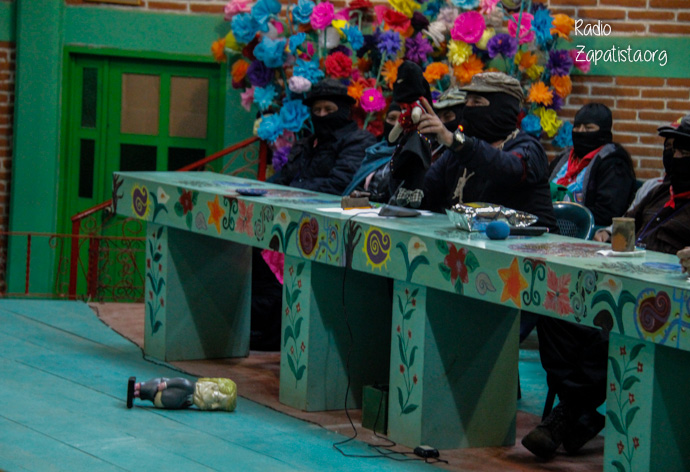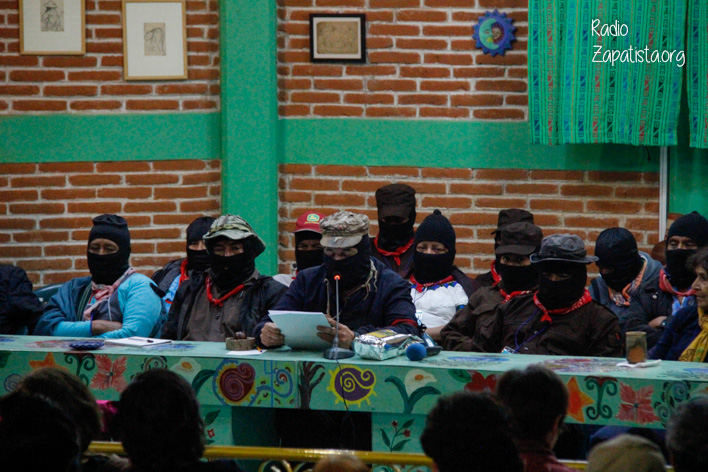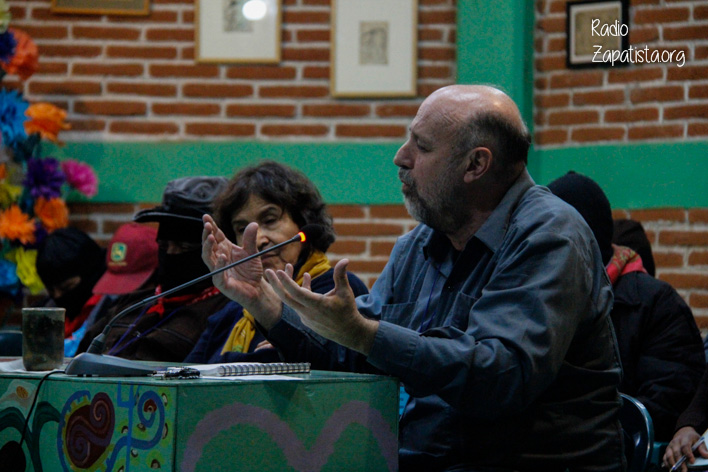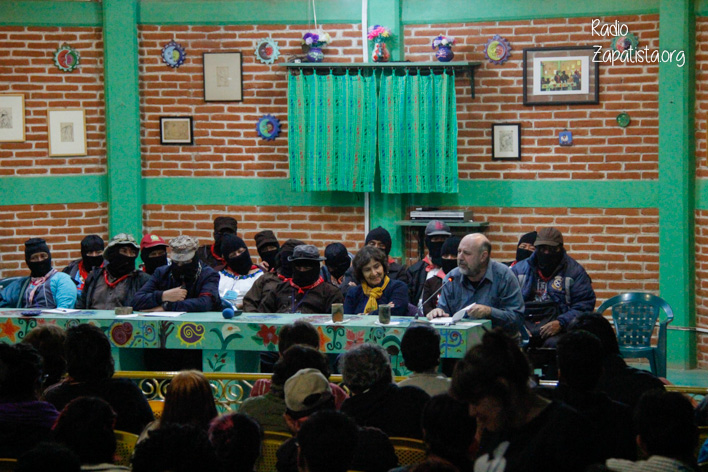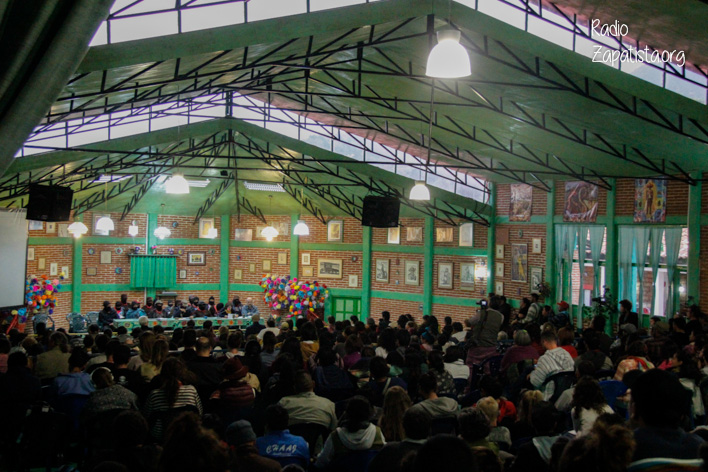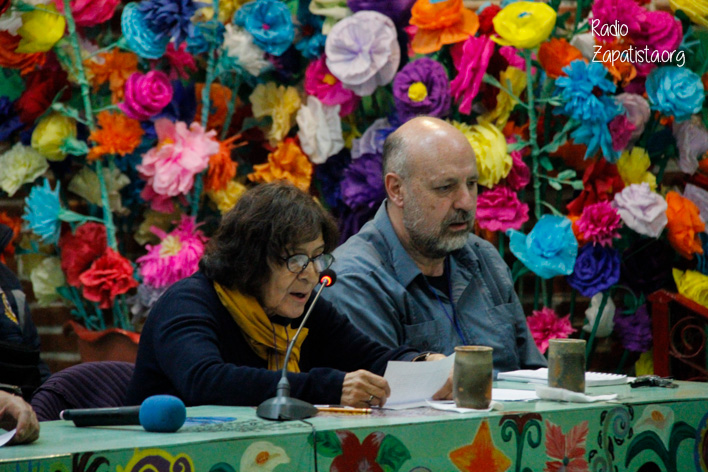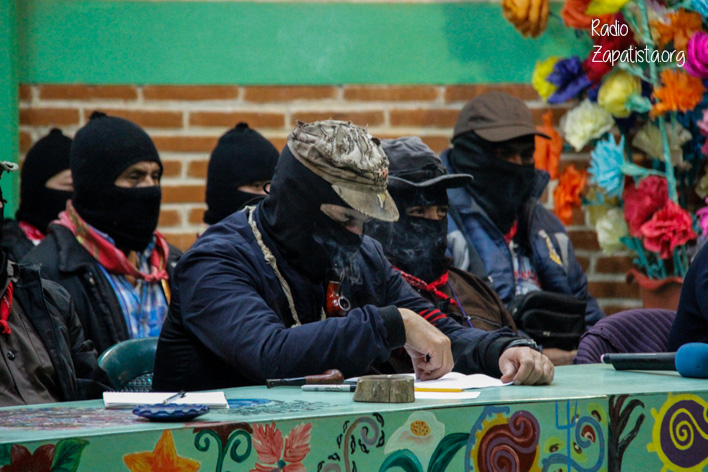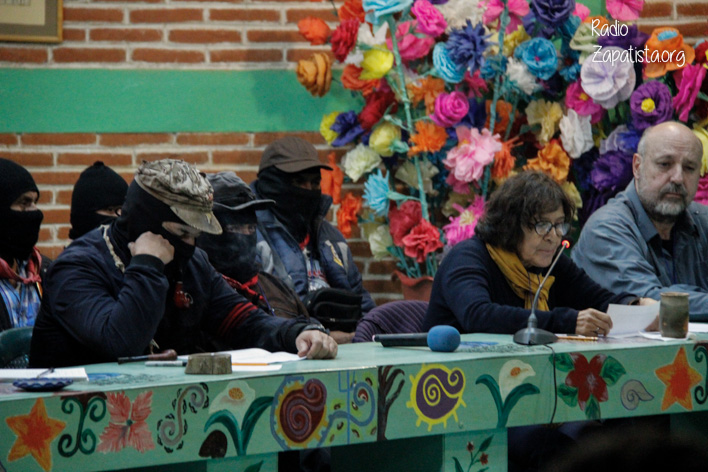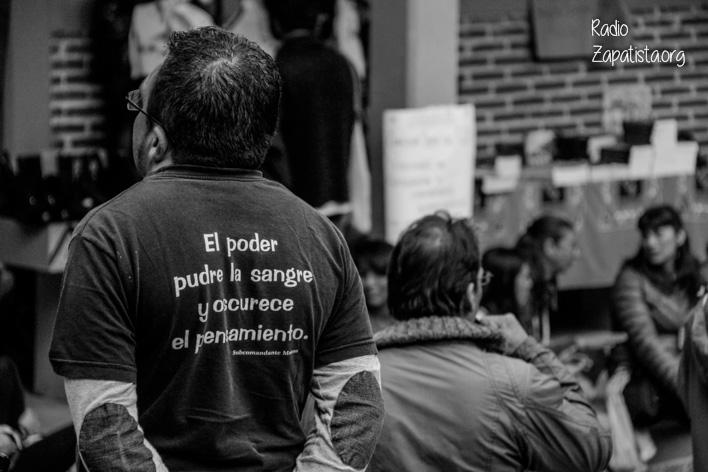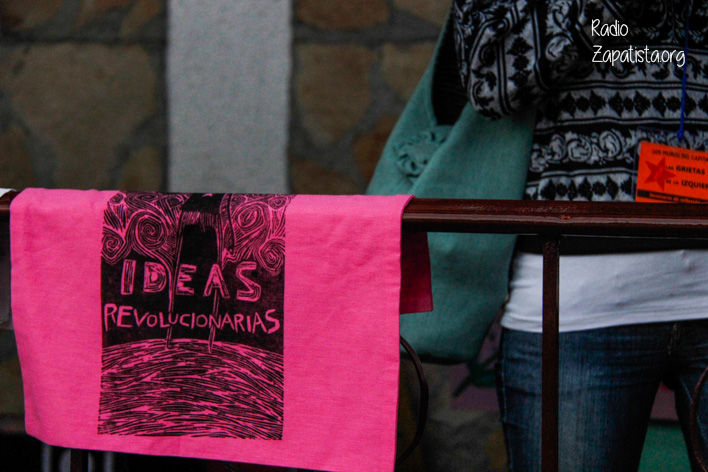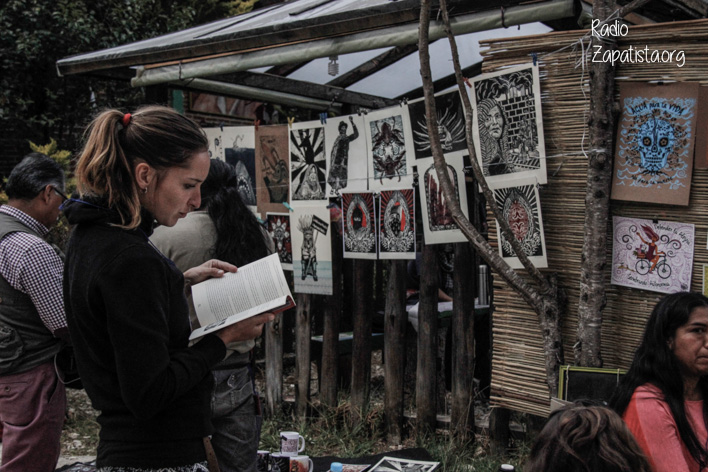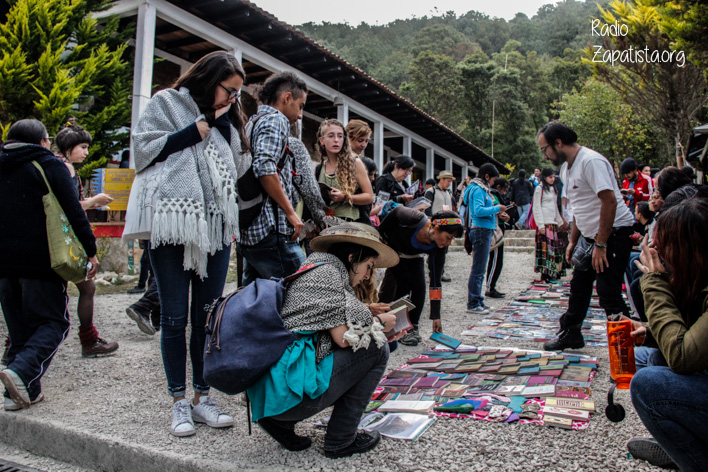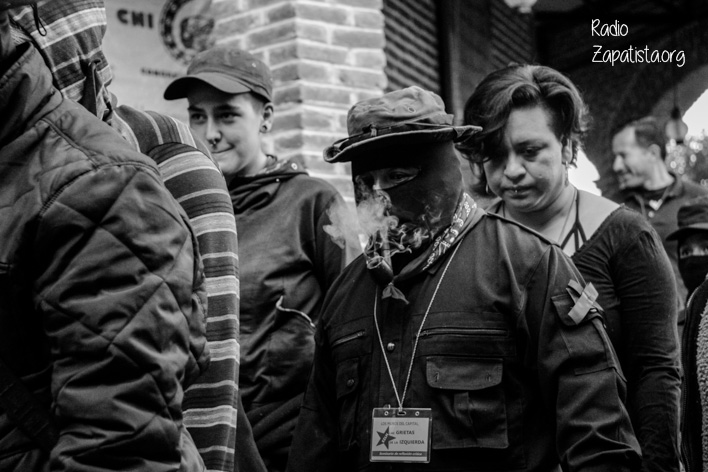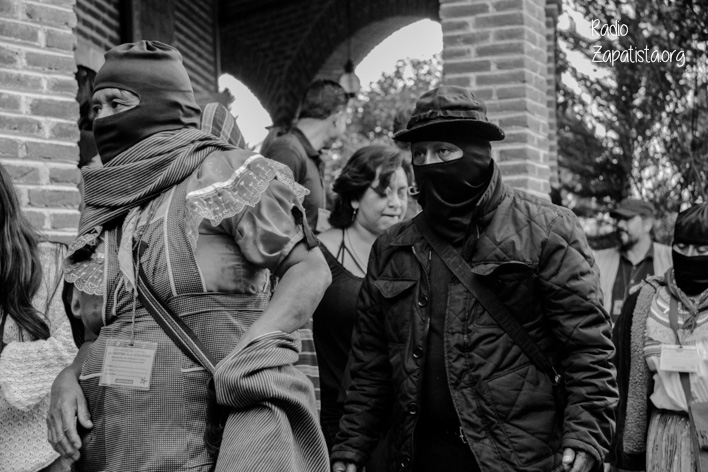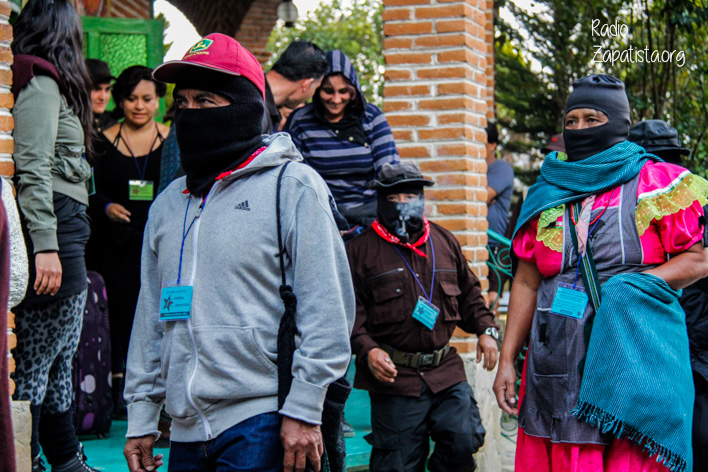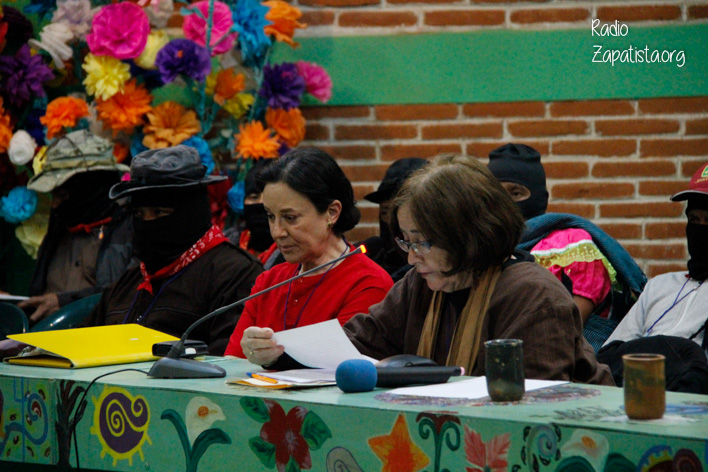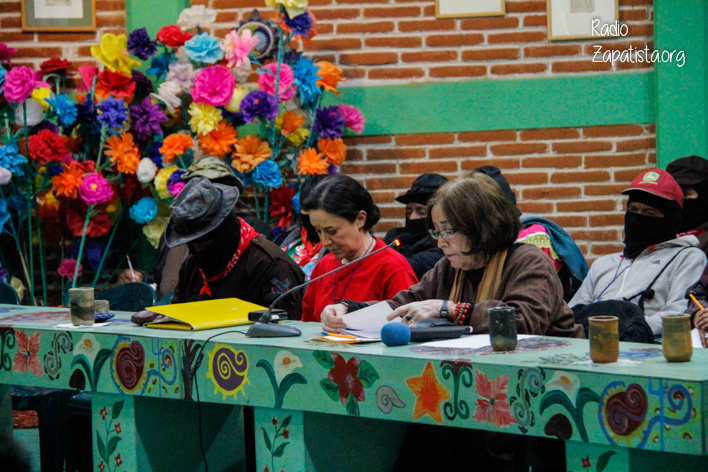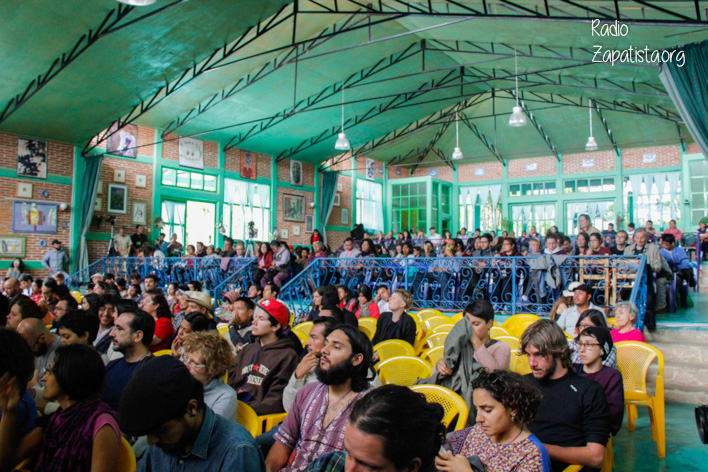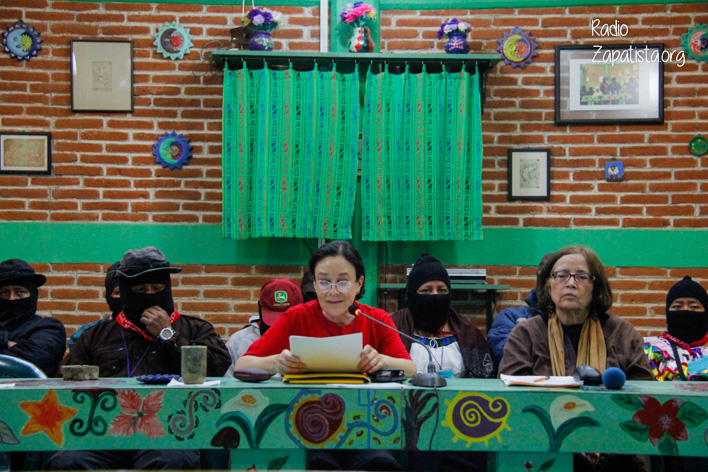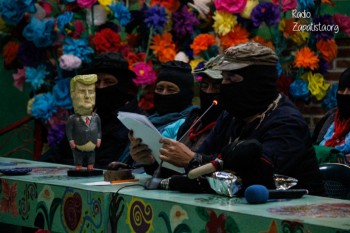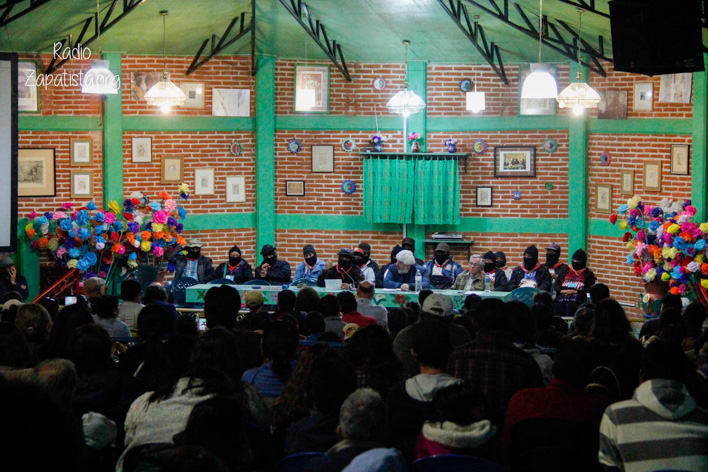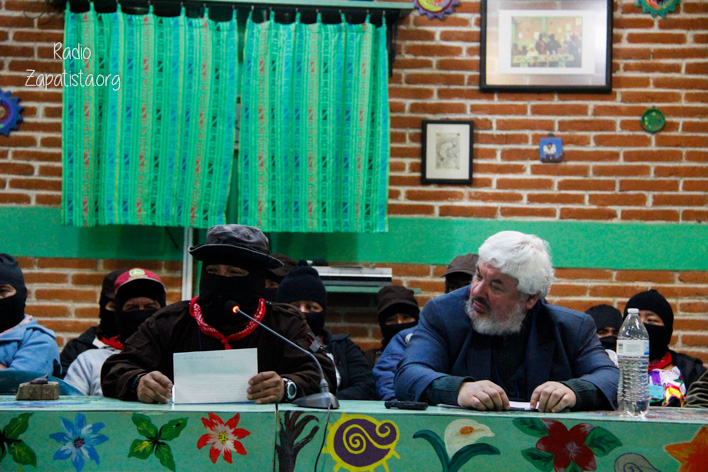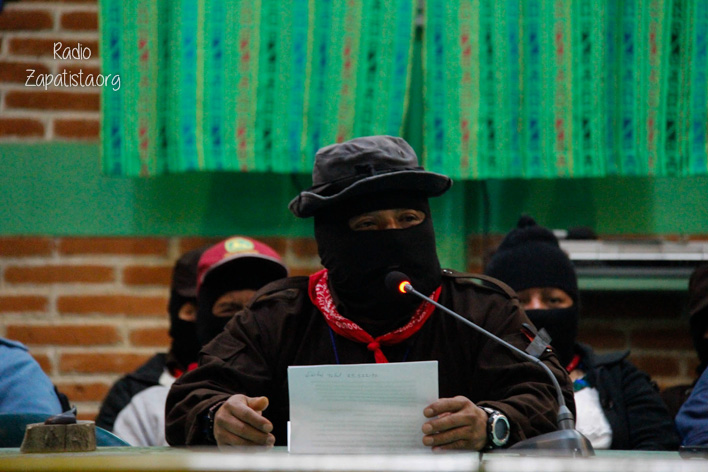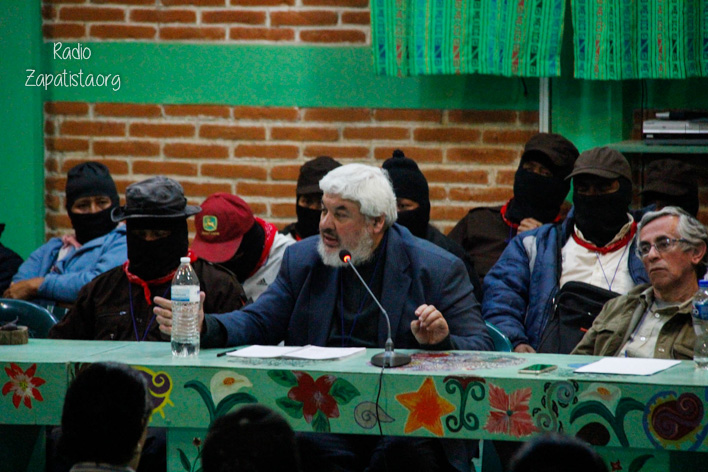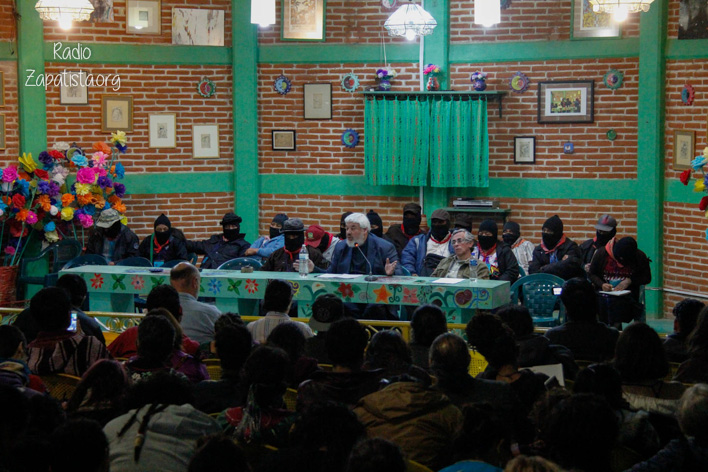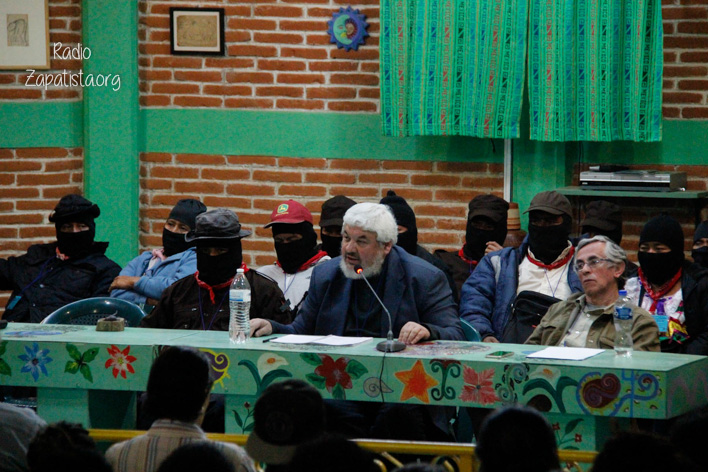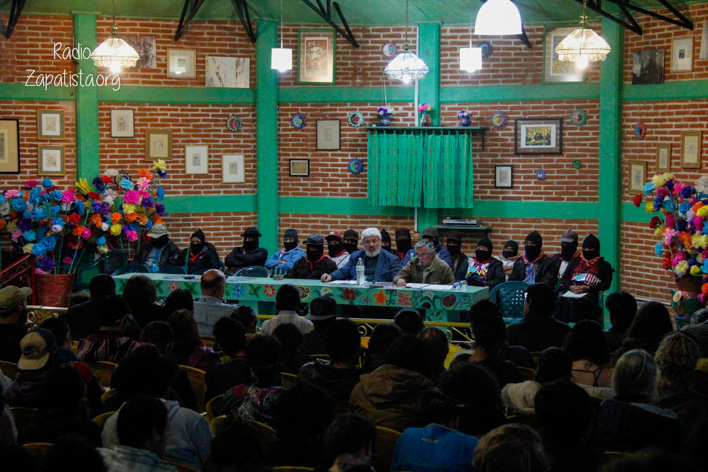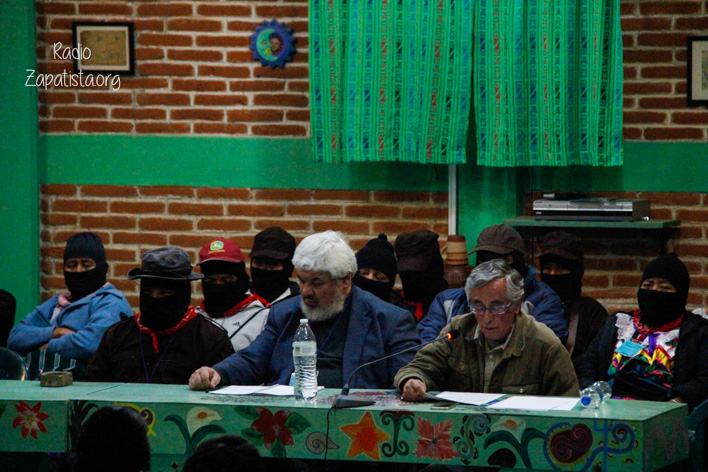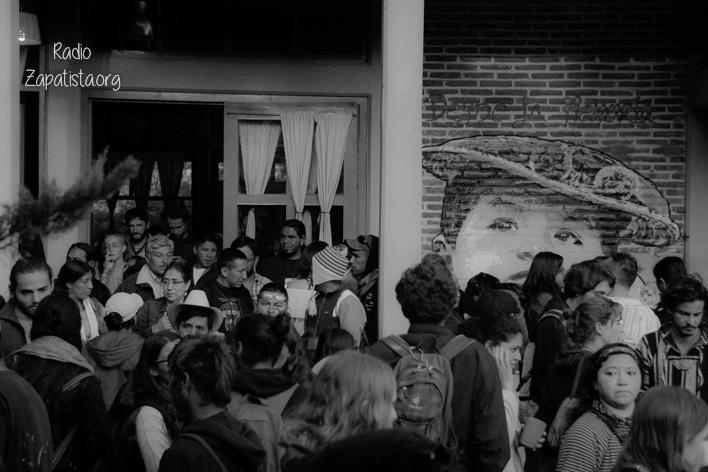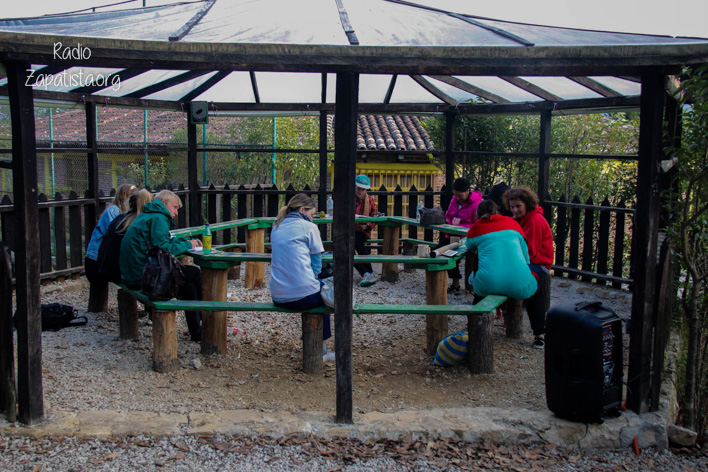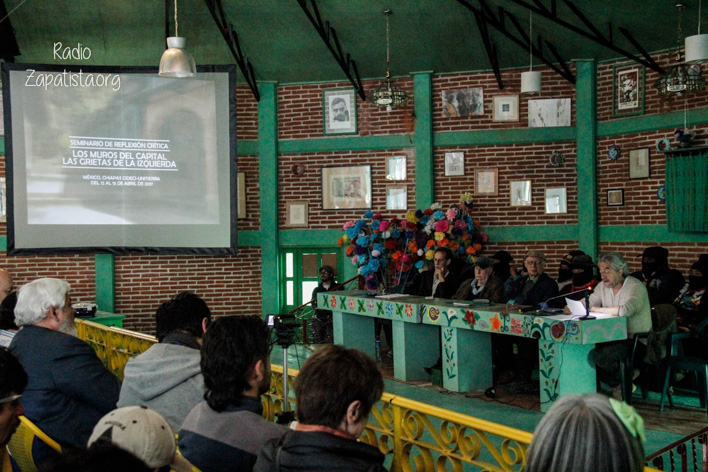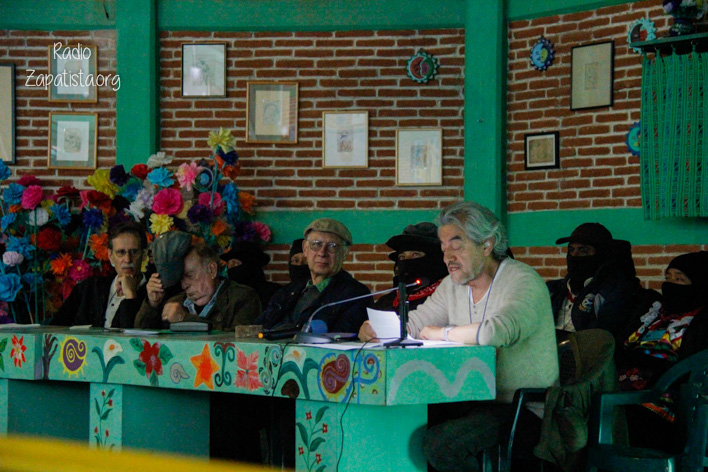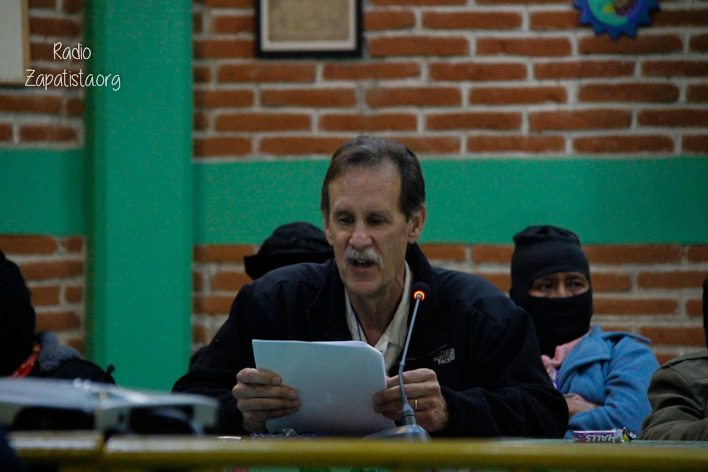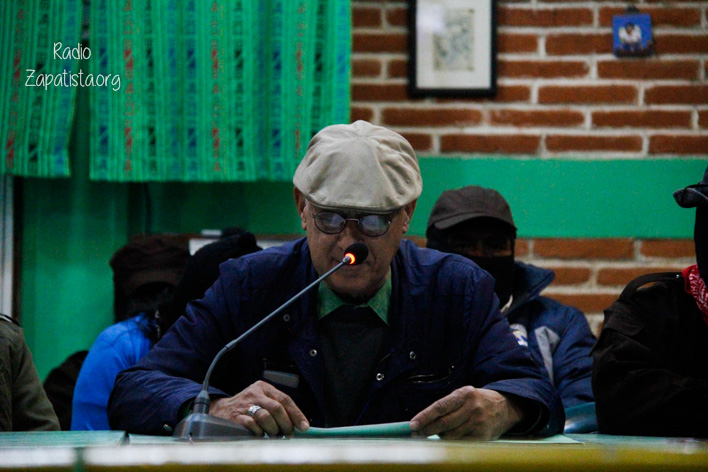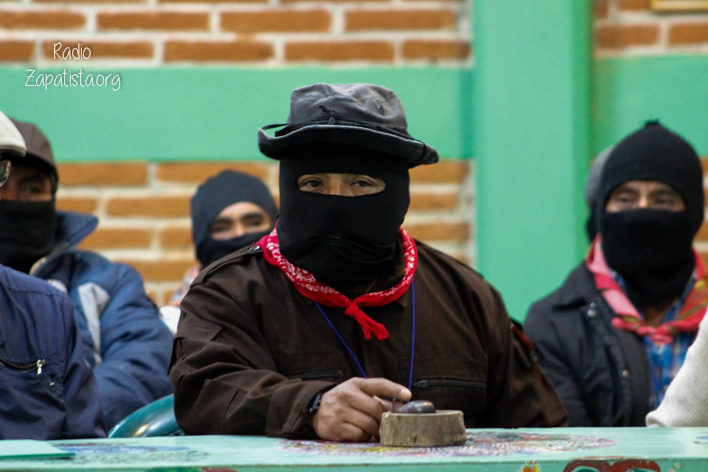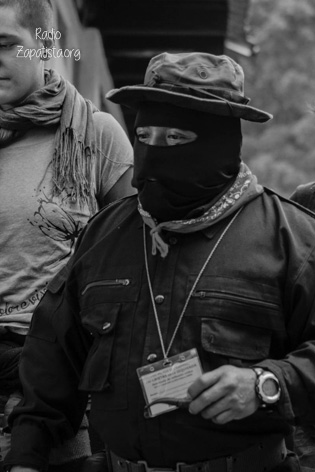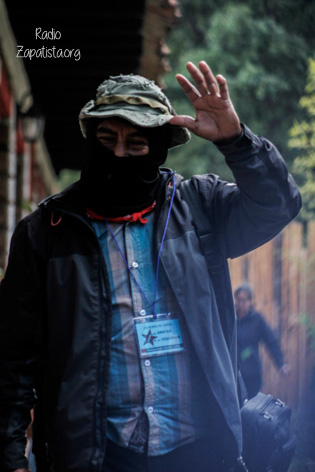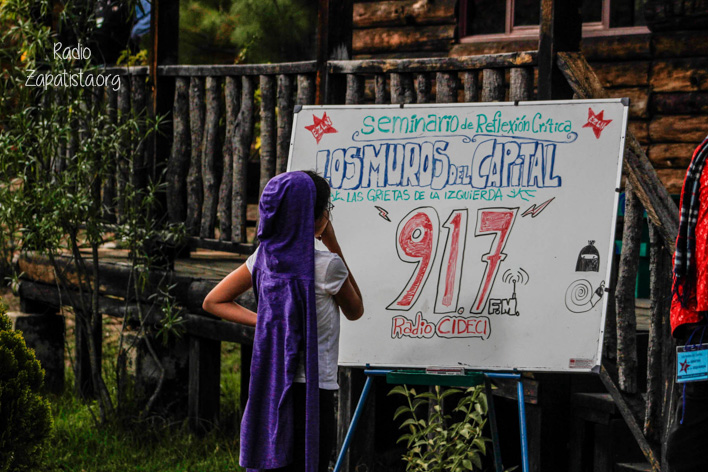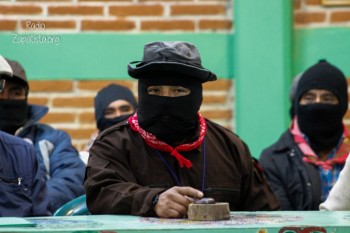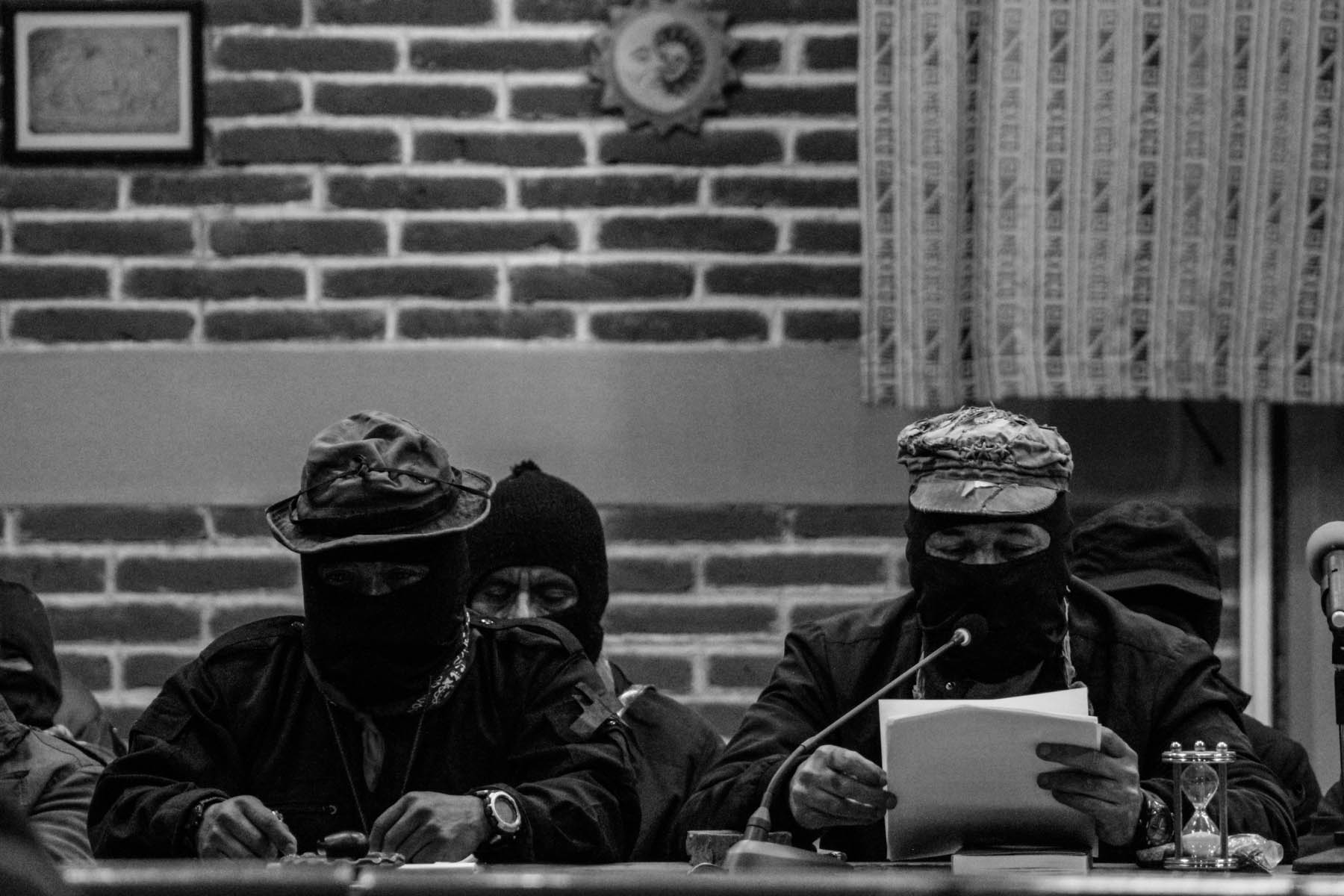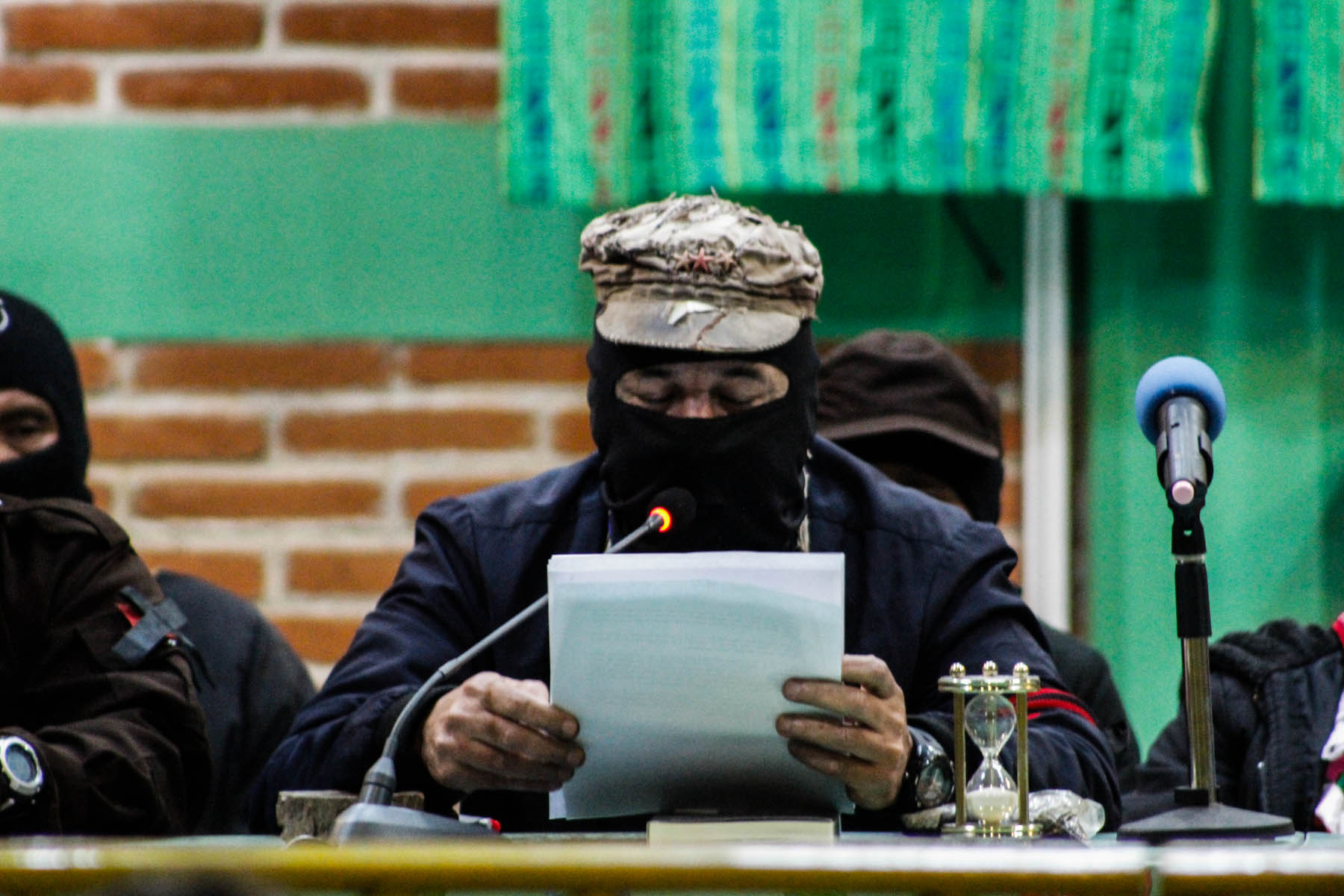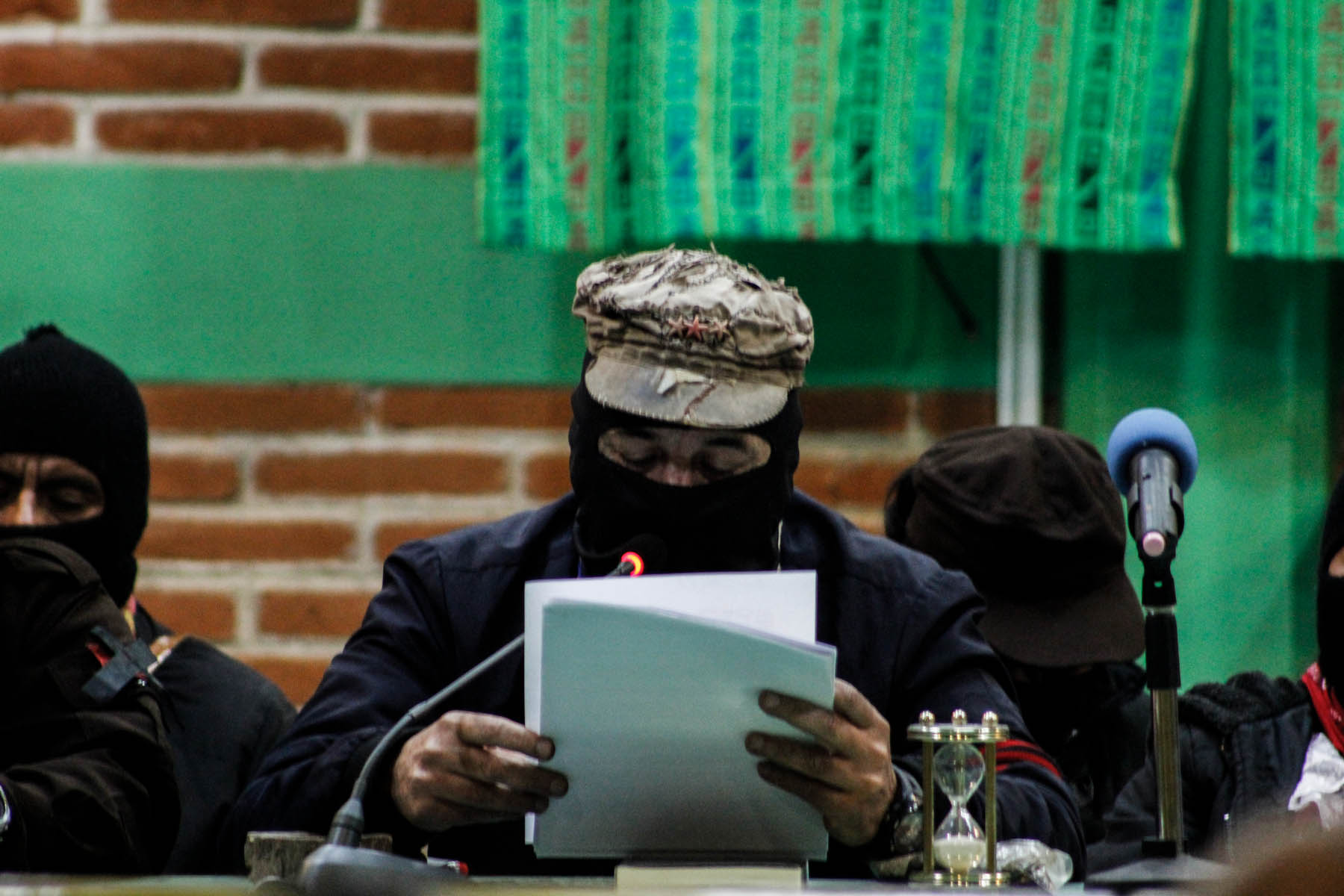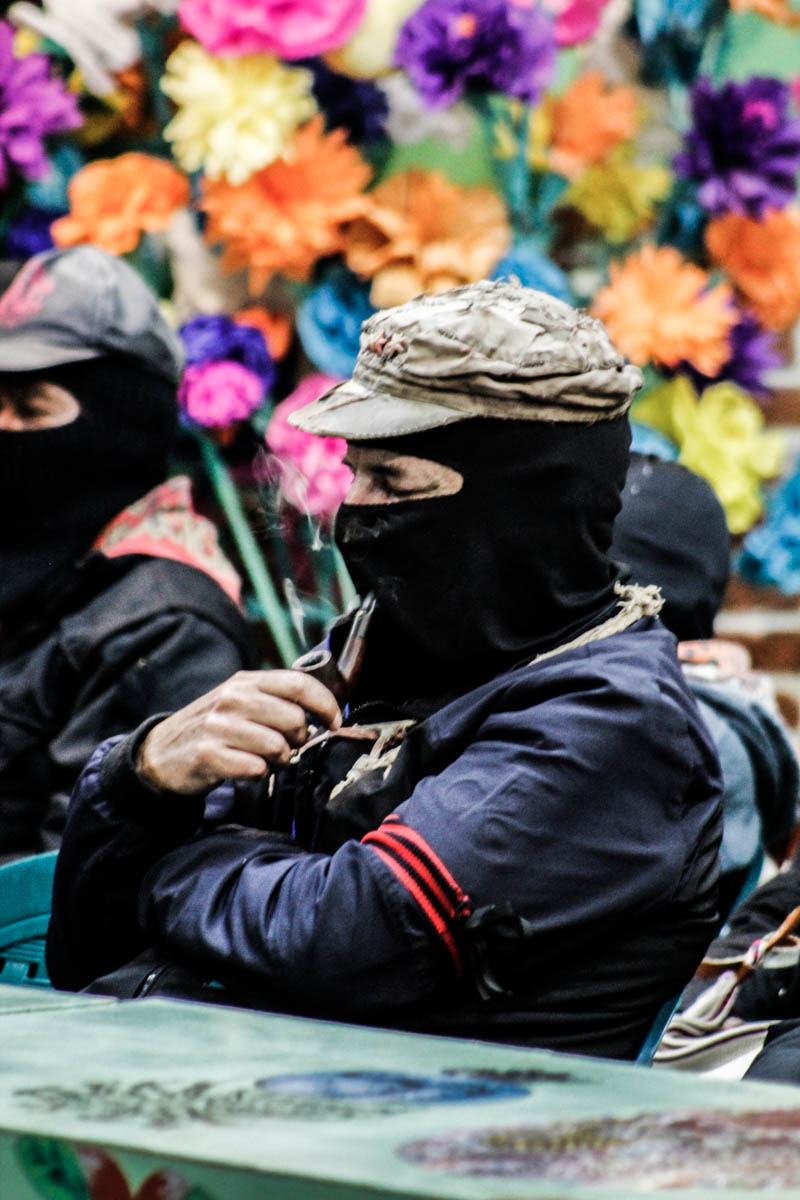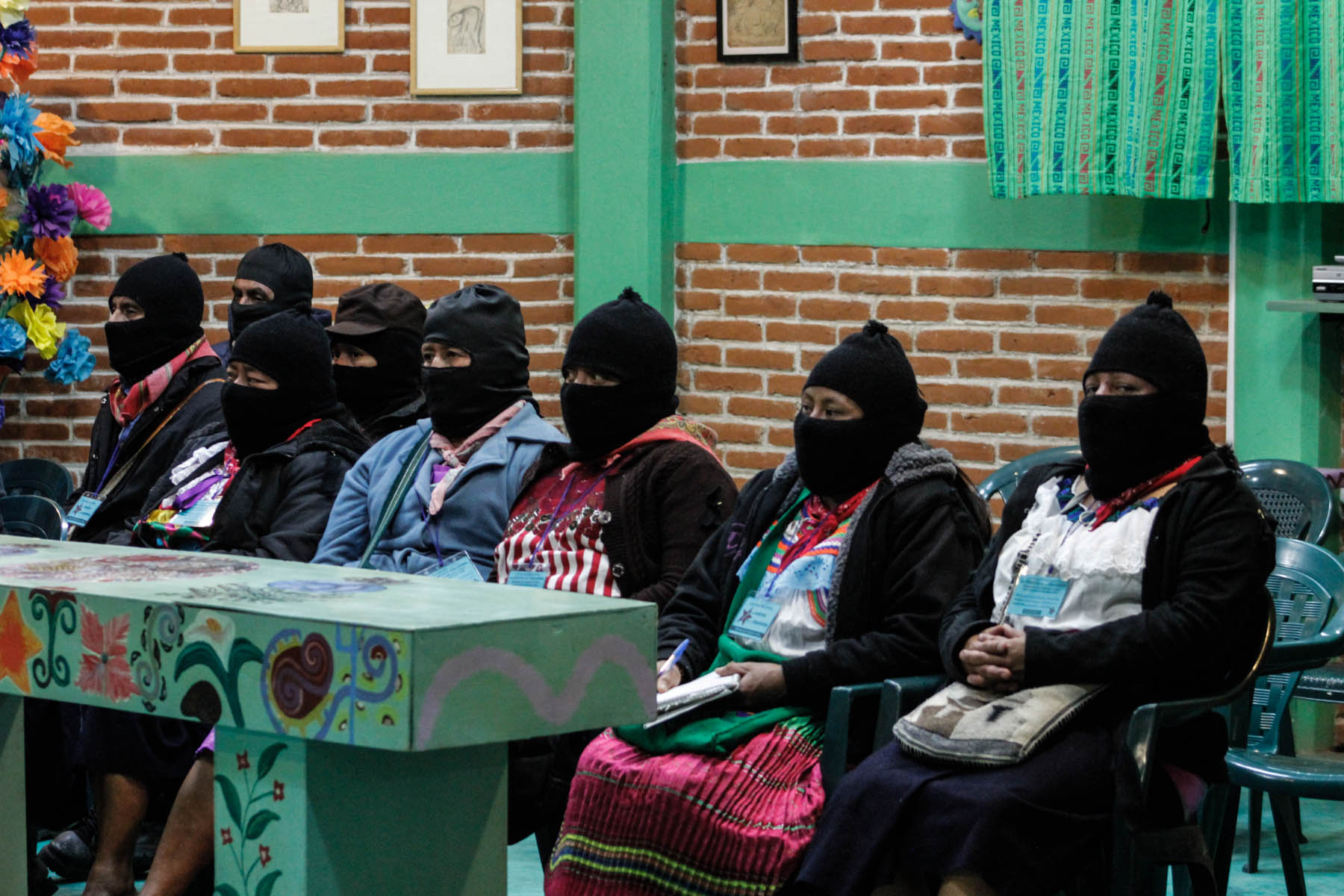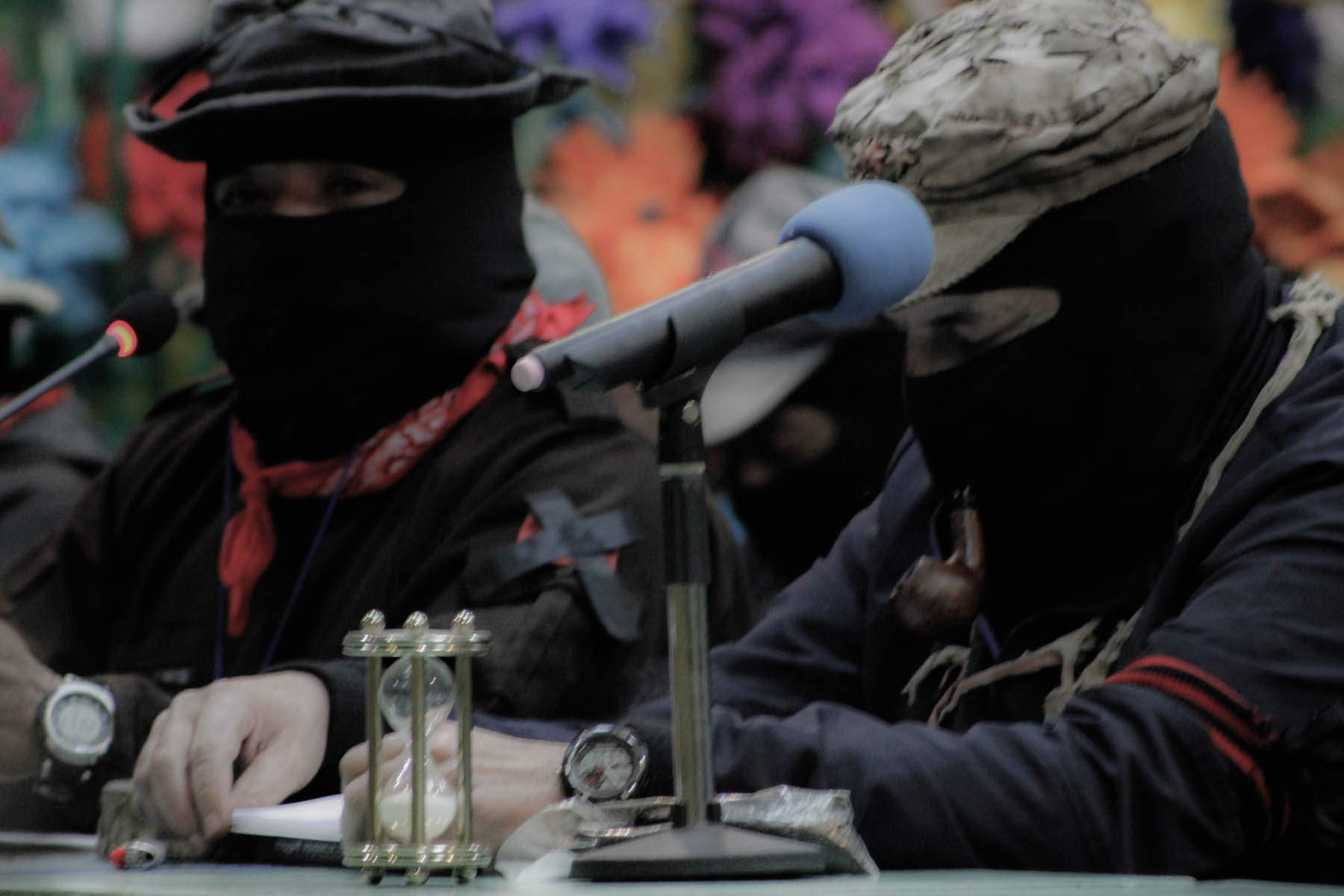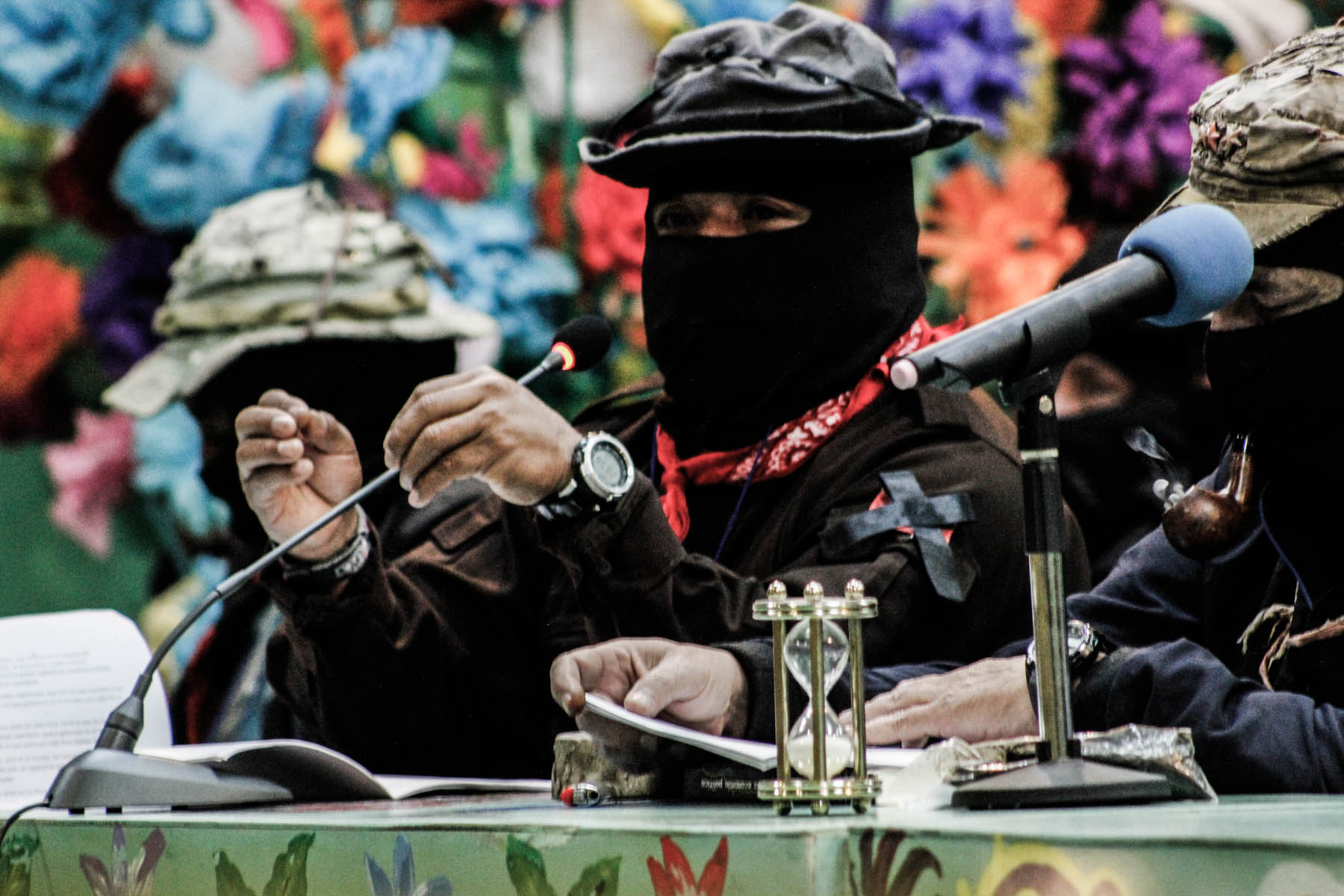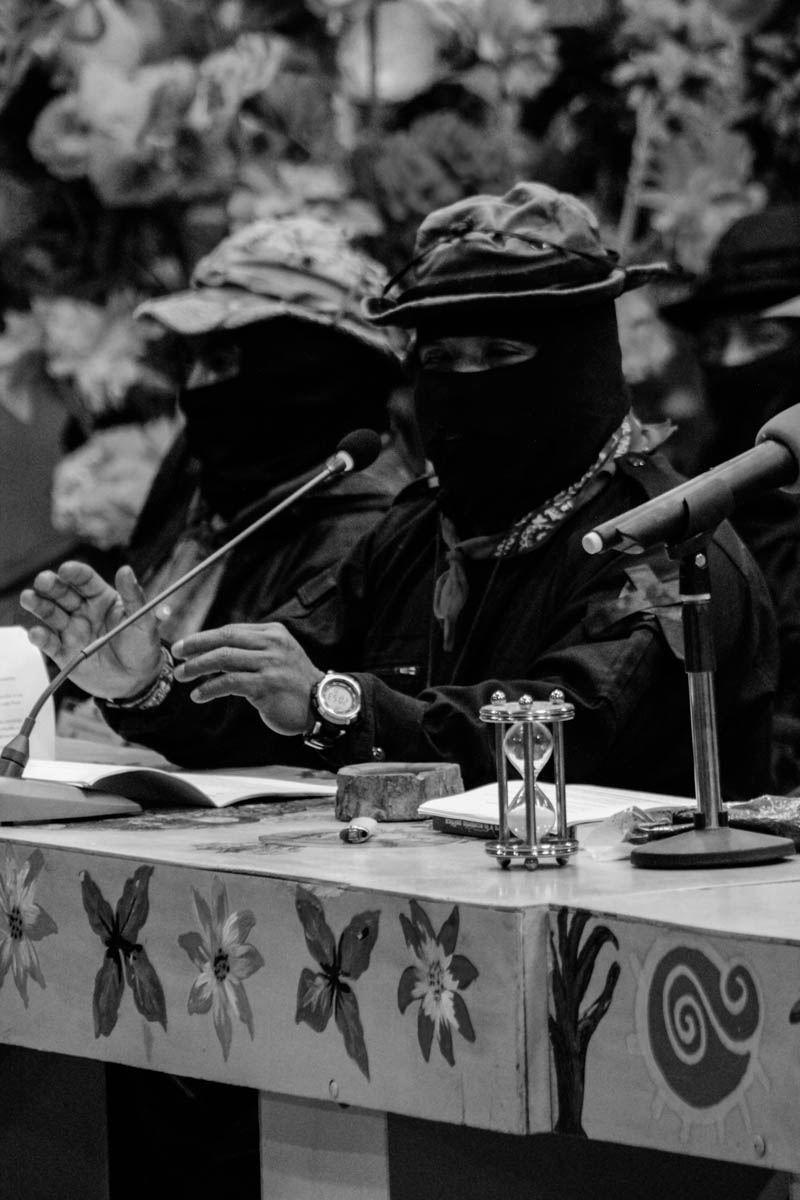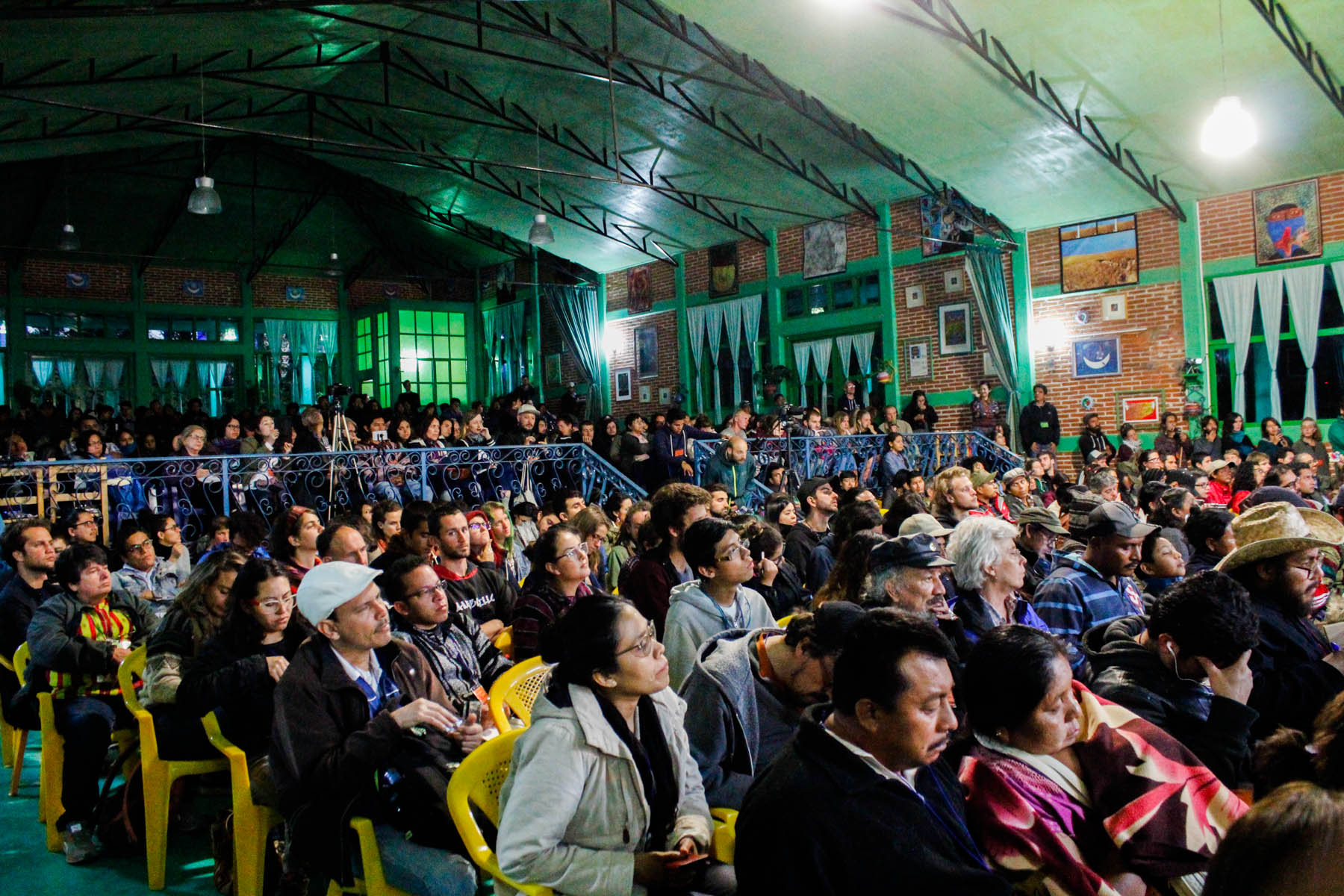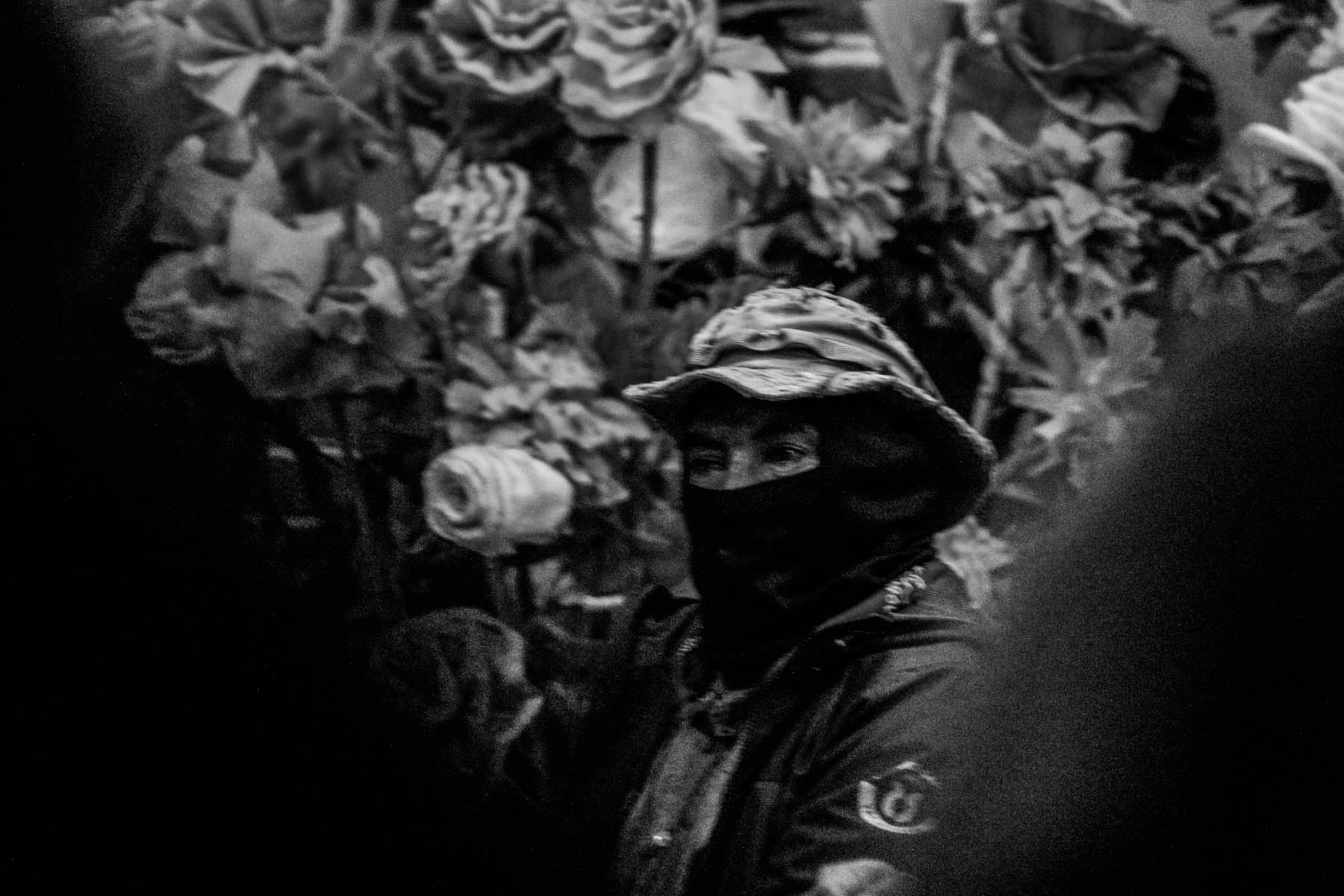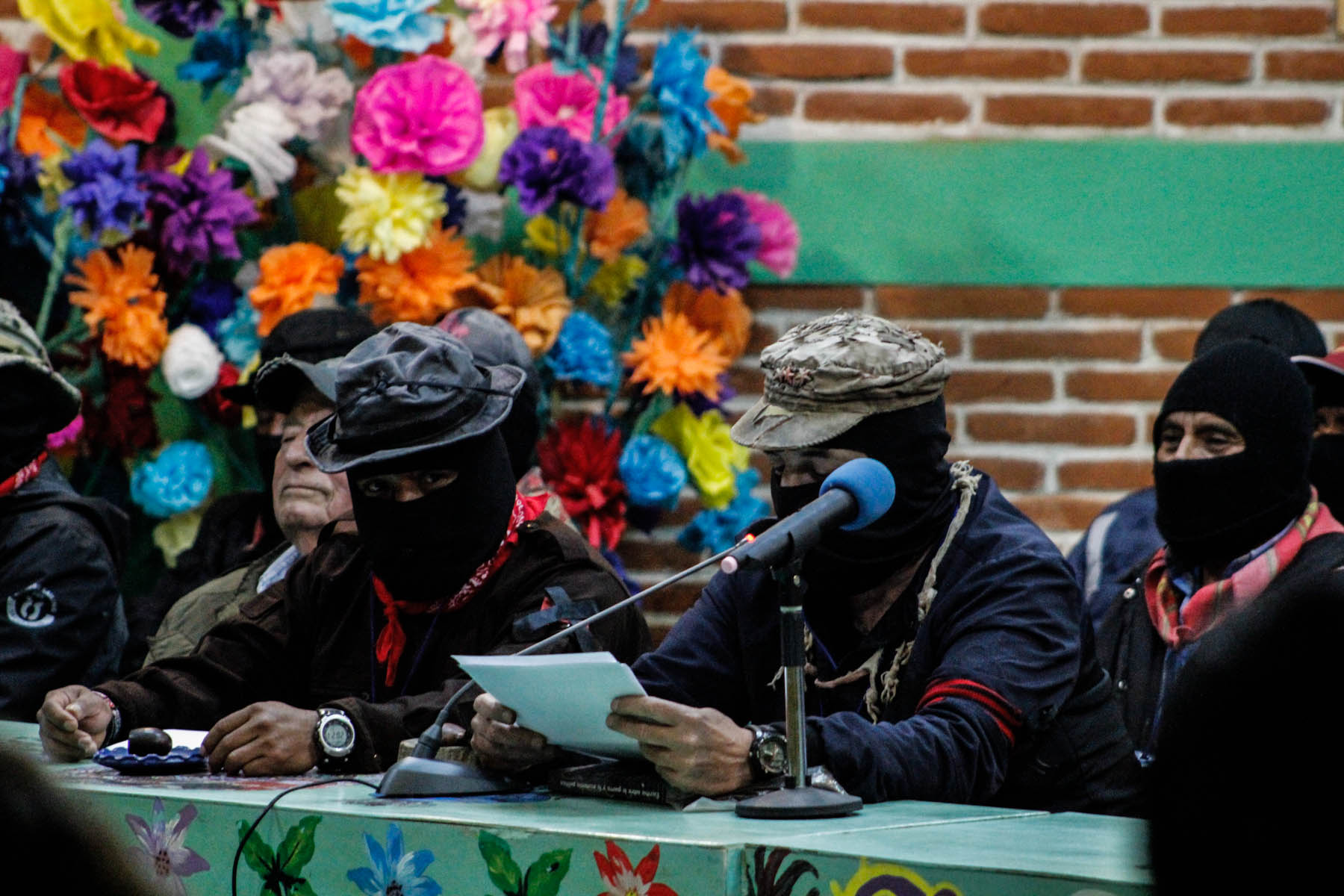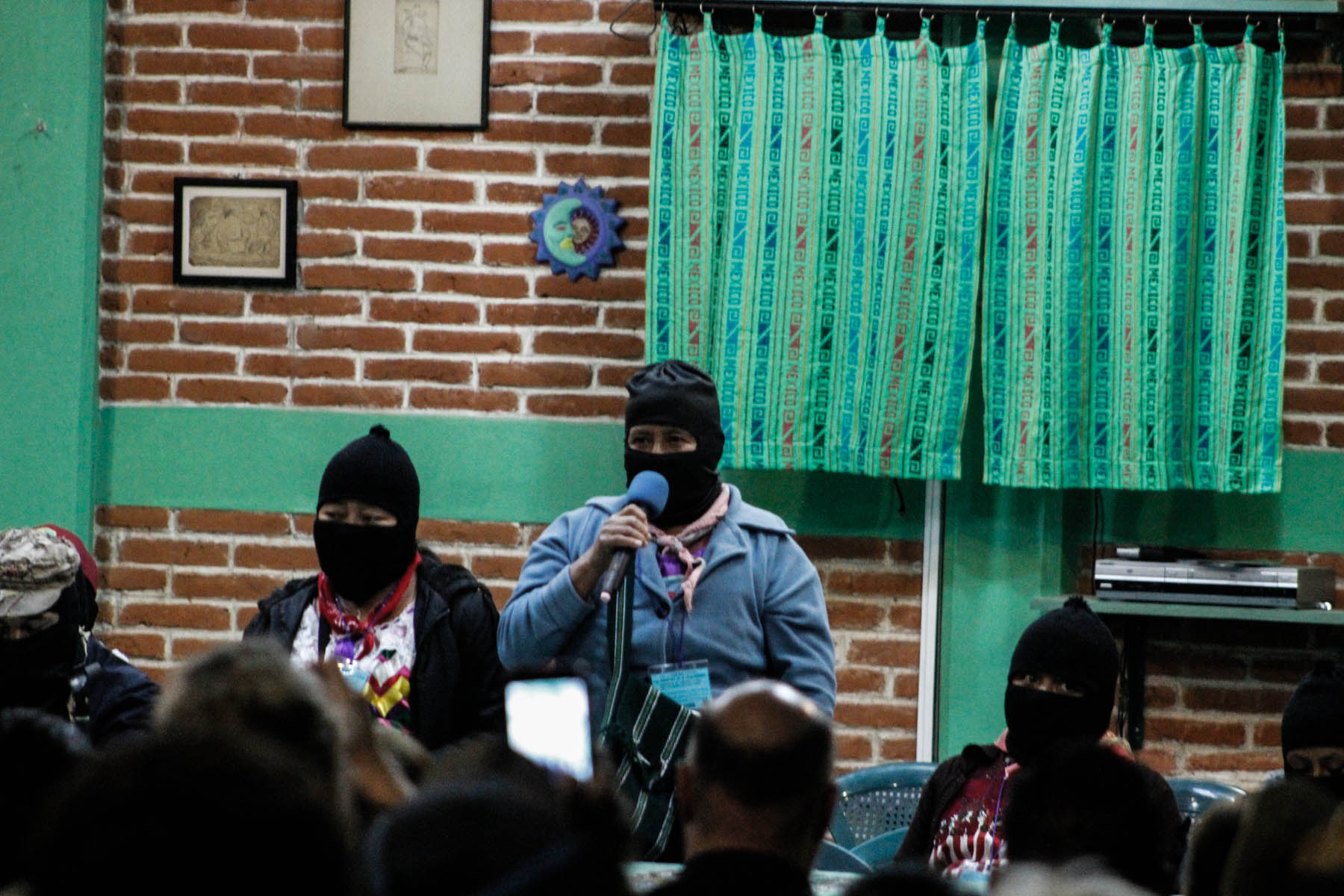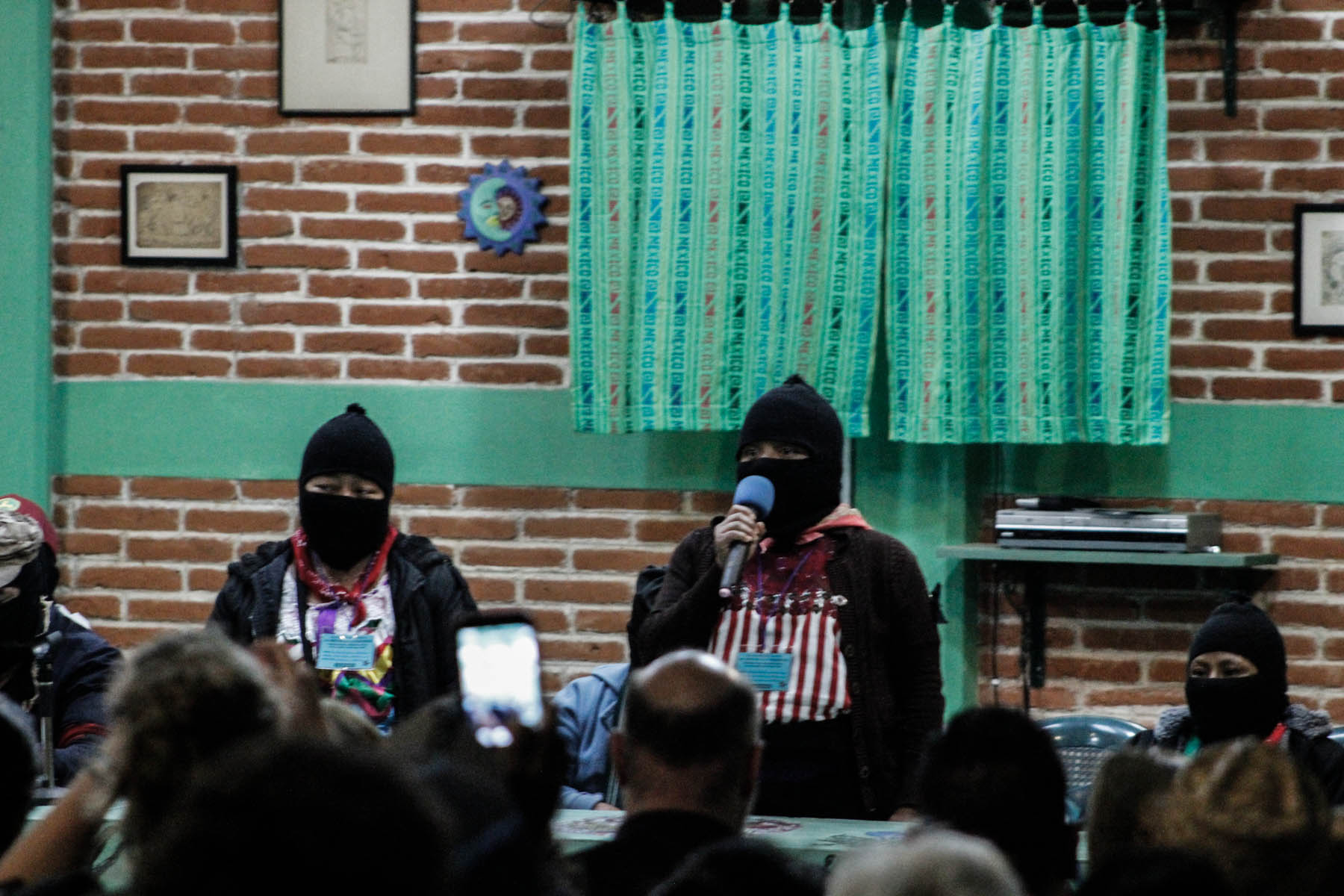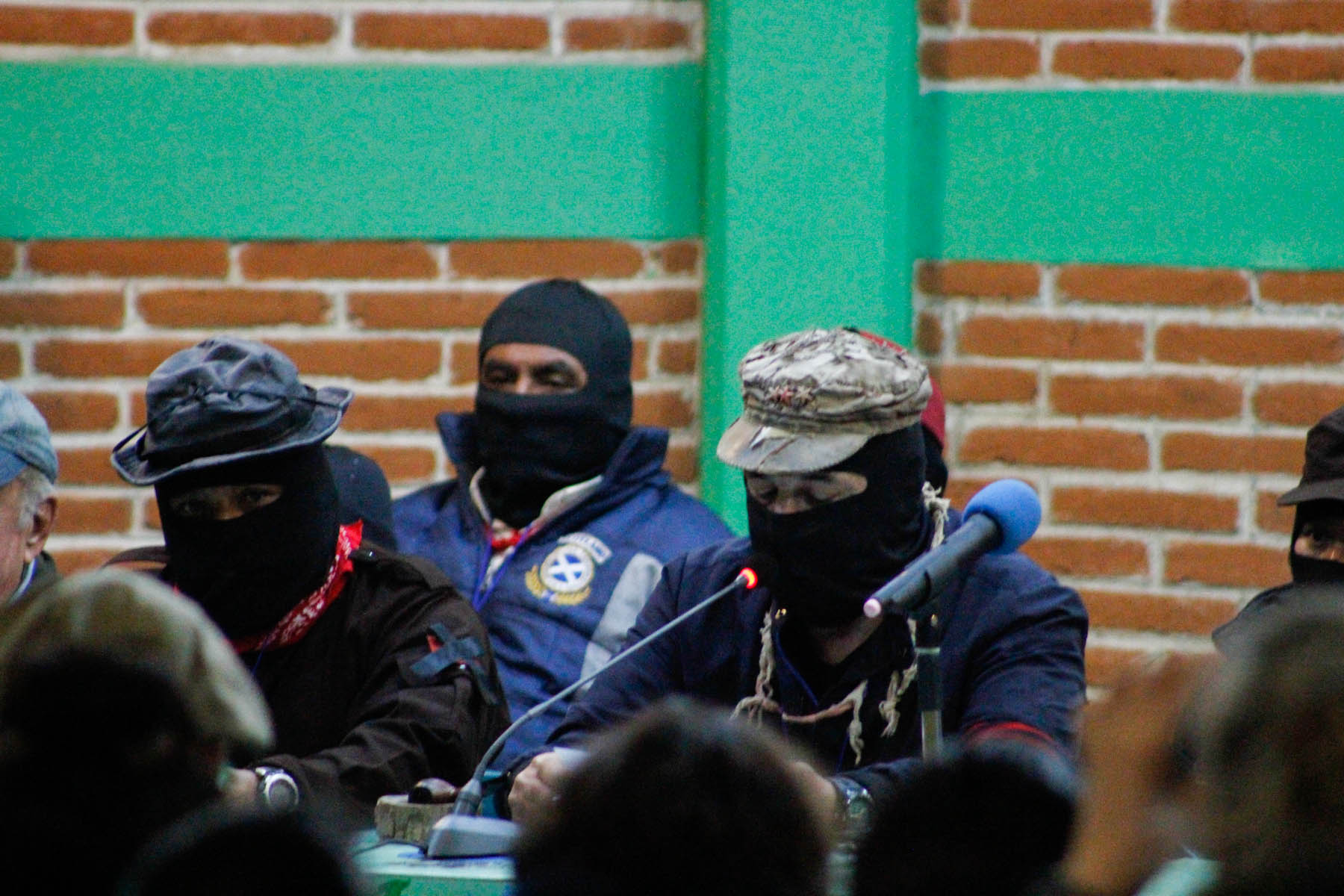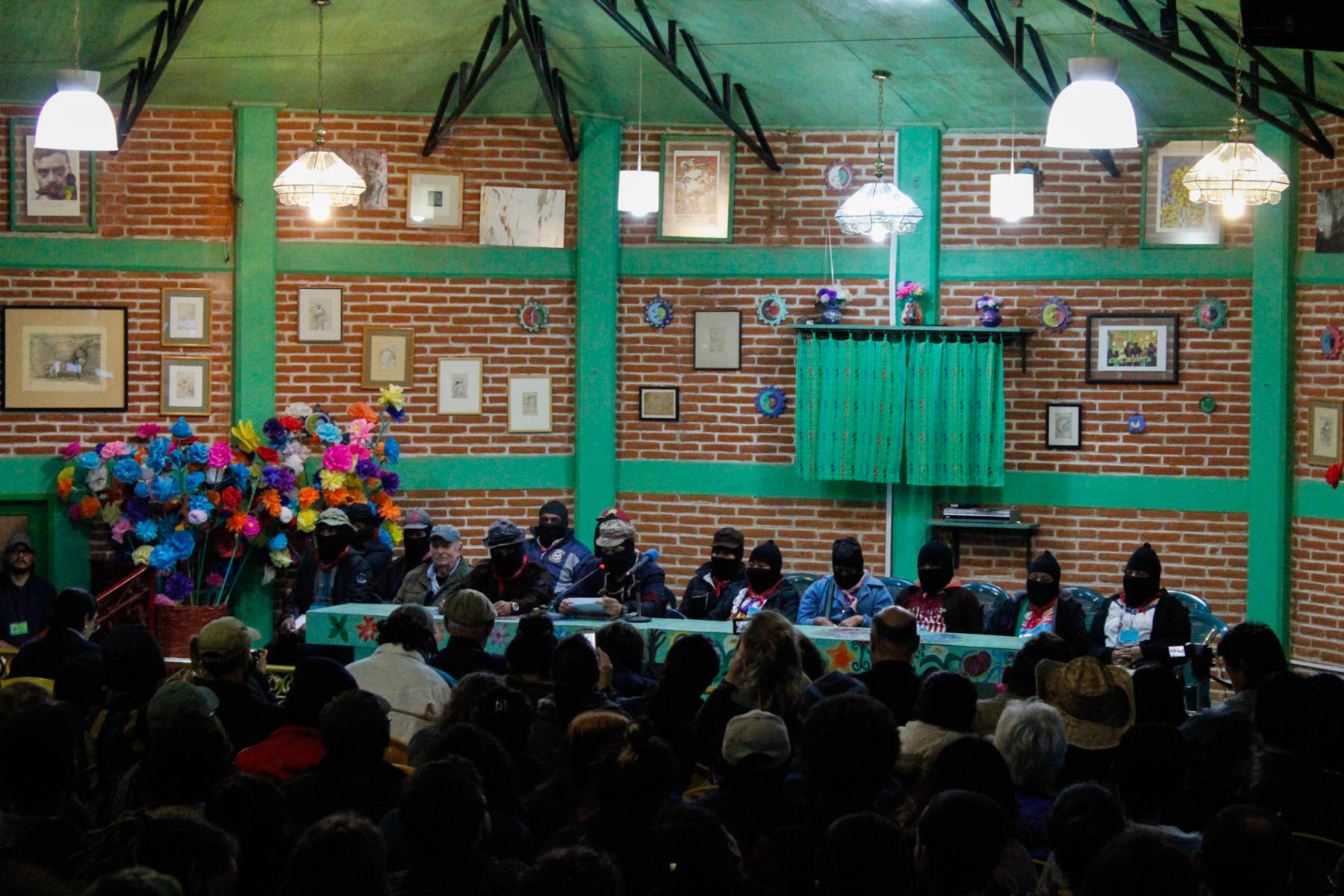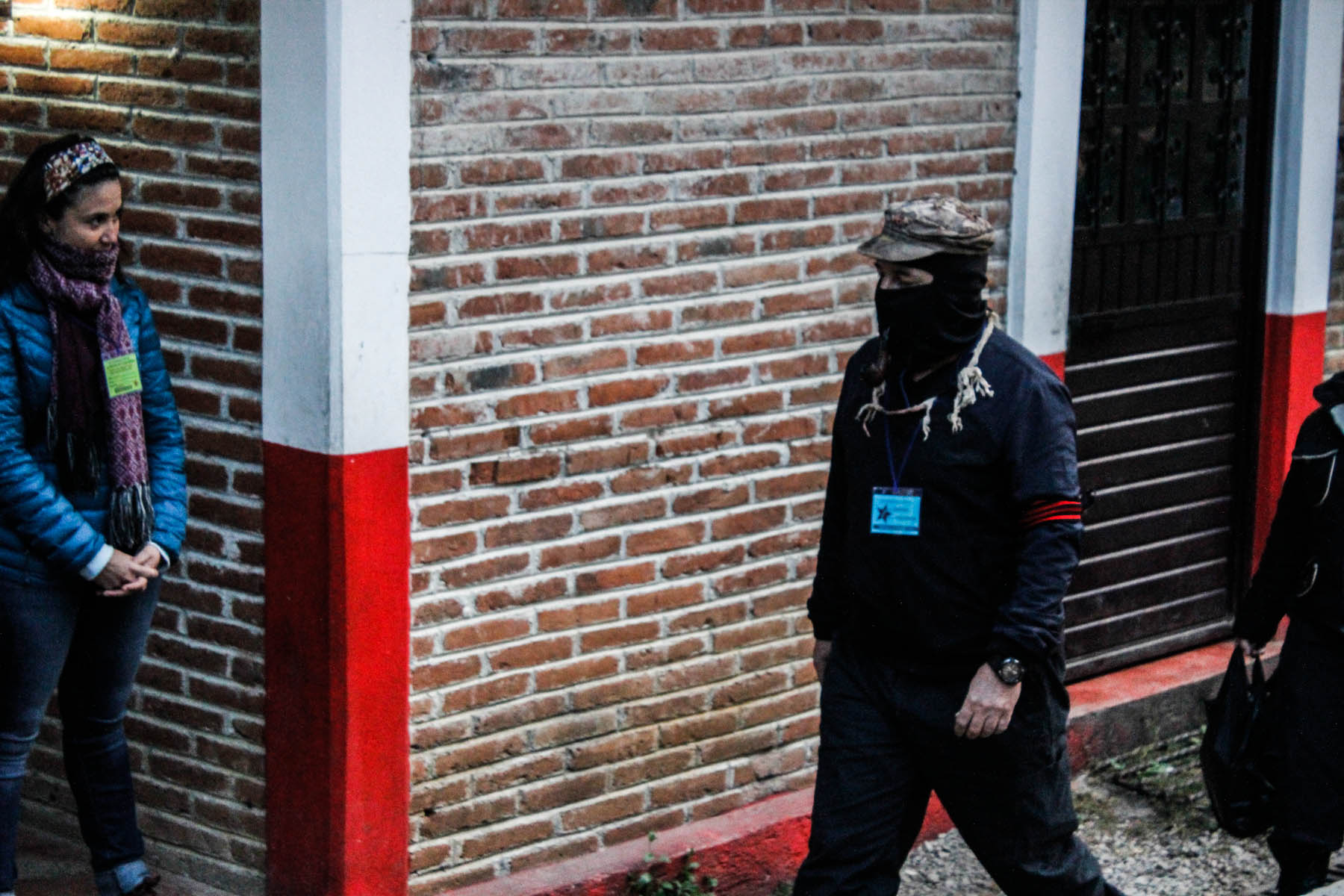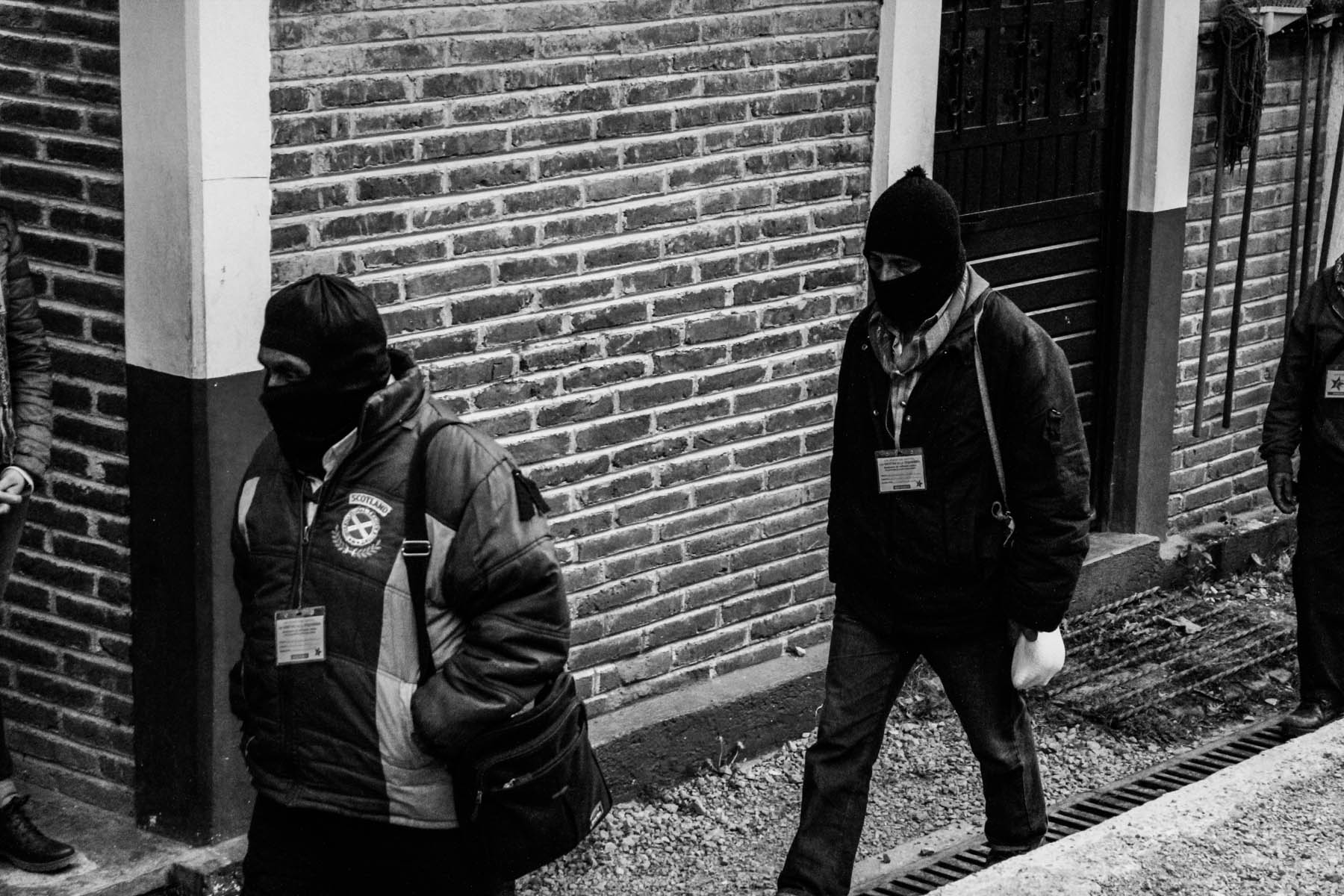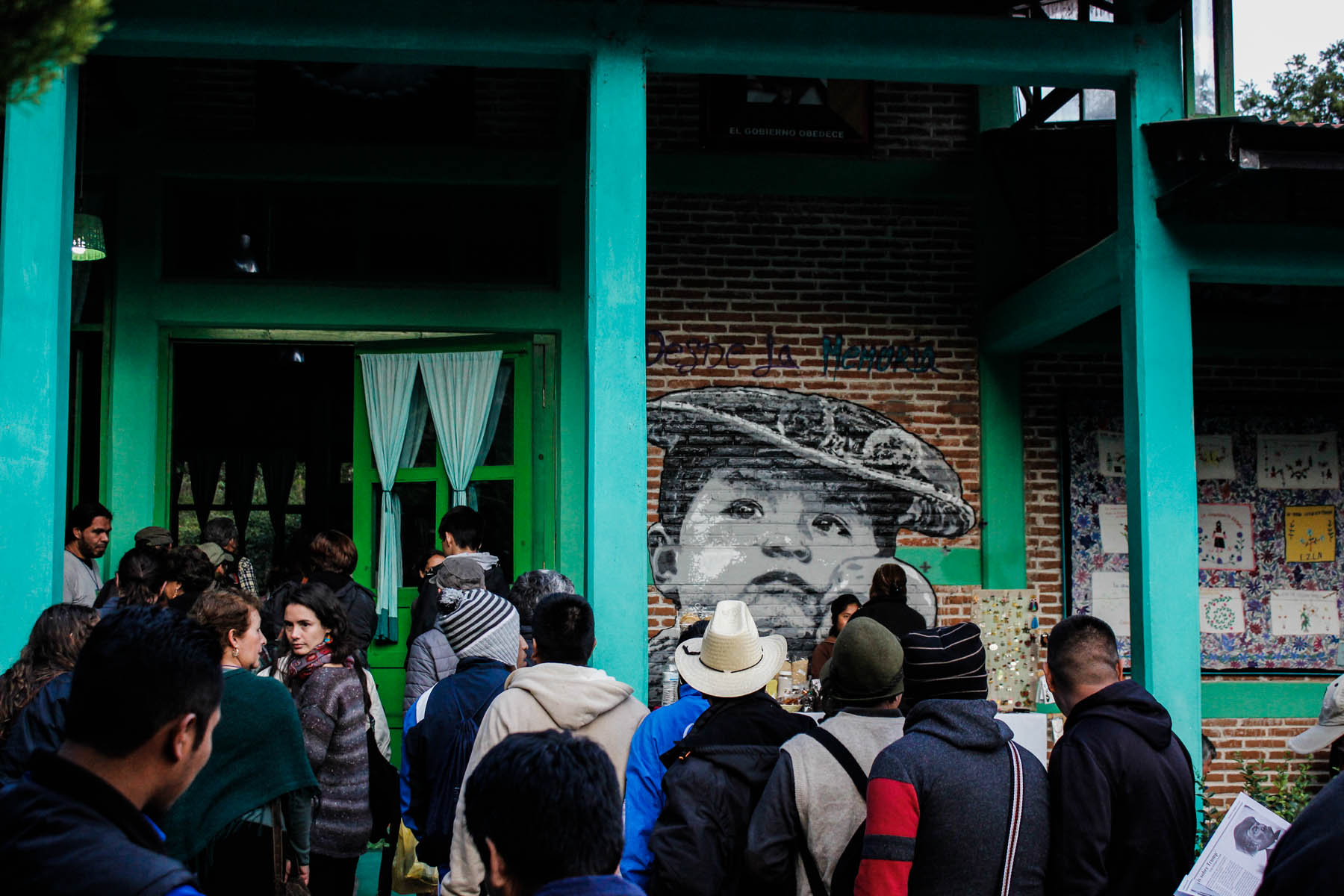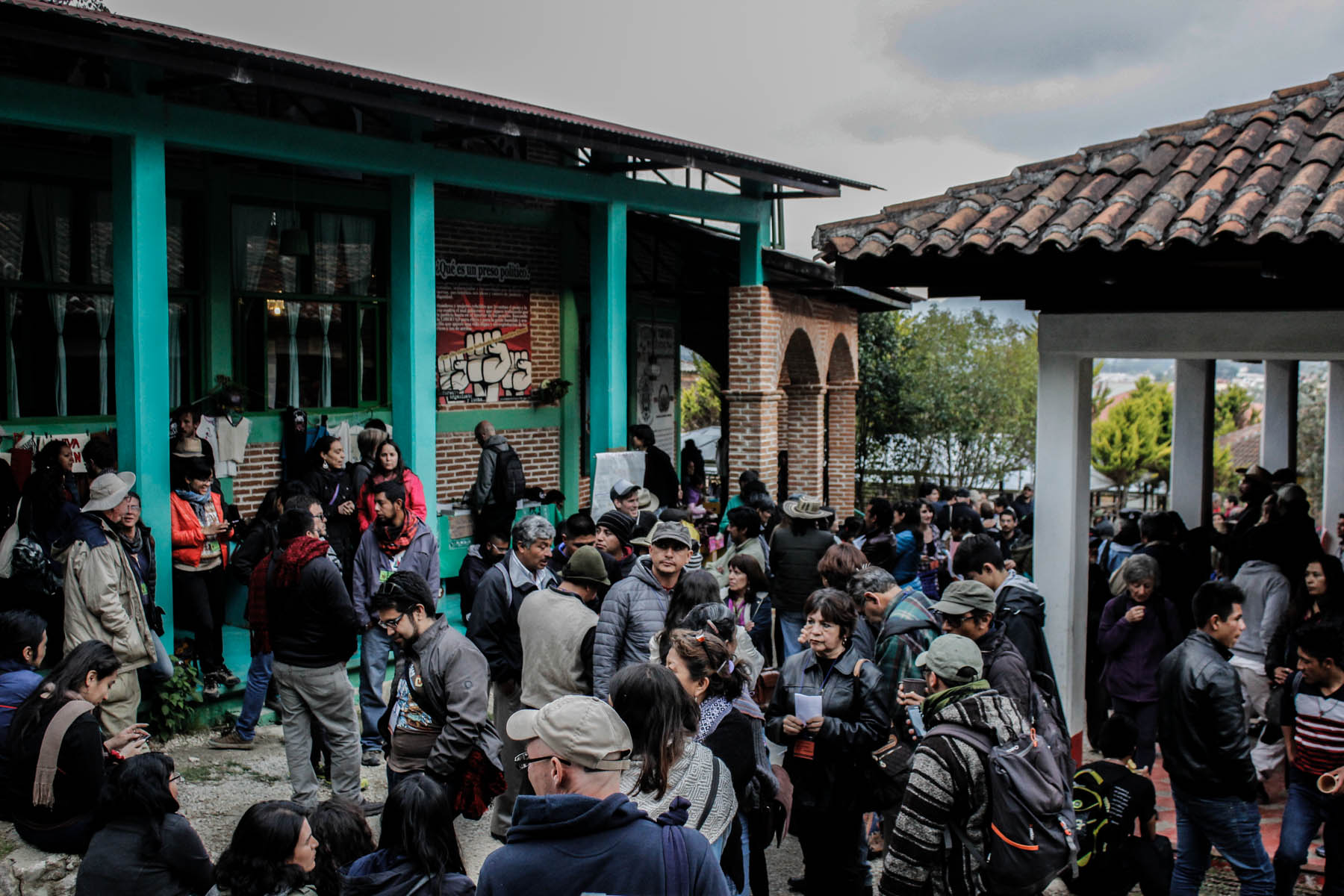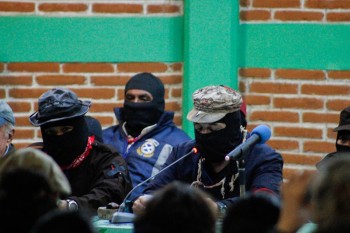
Pensamiento Crítico
(Español) Día 4: Los muros del capital, las grietas de la izquierda
Los muros del capital, las grietas de la izquierda
15 de abril de 2017
San Cristóbal de Las Casas
Cideci / Universidad de la Tierra Chiapas
“NO NOS QUEDA MÁS QUE ORGANIZARNOS”
No podemos resignarnos a morir y ver morir todo a nuestro alrededor. En el cierre del seminario “Los muros del capital, las grietas de la izquierda”, las palabras de Cristián Chávez, Carlos González, María de Jesús Patricio, Don Pablo González Casanova y el Subcomandante Insurgente Moisés sonaron así de claras y contundentes.
Hoy, la guerra contra los pueblos amenaza con literalmente destruirlos, y es por ello que la encrucijada que se cierne frente a nosotrxs no es otra sino elegir entre la frontera que separa la vida de la muerte. Esta noche ha quedado claro que es para atajar esa tormenta y previsibles escenarios de esclavitud, guerras y enfermedades como motores y condiciones indispensables del capital y el aumento de asesinatos de millones de personas que el Congreso Nacional Indígena ha formulado la propuesta de conformar un Concejo Indígena de Gobierno cuyo dolor, rabia y dignidad se materialicen en la voz de una candidata indígena para las elecciones presidenciales del 2018.
Para Don Pablo González Casanova, lejos de dividir a la izquierda, esta propuesta en realidad busca unificarla, pues la izquierda real es aquélla que lucha por la dignidad del ser humano, objetivo ausente –explicó Don Pablo tras hacer un recuento histórico- en las izquierdas institucionales. Tras explicar que los capitalistas son tan tontos y necios que no pueden entender que han creado el origen de su propia muerte, Don Pablo afirmó que ahora contamos con las técnicas necesarias para volver realidad ese mundo donde quepan muchos mundos, y añadió que para ello tenemos que aumentar la capacidad de comunicar nuestros proyectos al resto del mundo. A fin de cuentas, en la Selva Lacandona tenemos la raíz de un proyecto donde acaso puede encontrarse la raíz de la esperanza para la humanidad, finalizó Don Pablo.
Para caminar ese proyecto, Cristian Chávez dejó claro que el CNI sabe que los pueblos tienen sus propios tiempos y que éstos no son los de arriba. A pesar de que se asomará al calendario electoral de los de arriba, la propuesta del CNI sabe que su lucha va más allá del tiempo contenido en esos relojes. Entrará un momento en ellos, explicó Carlos González, sólo para cumplir objetivos como visibilizar la guerra capitalista y las luchas indígenas, dar cobertura al CNI ante la represión y articularse con los sectores por el momento ajenos a esta lucha por la vida. Las elecciones son por excelencia la fiesta de los de arriba, y nosotros queremos colarnos en esa fiesta para echárselas a perder hasta donde podamos, sintetizó Carlos.
María de Jesús Patricio dedicó su intervención para las mujeres que a pesar de haber estado presentes a lo largo de la historia en las luchas aún son invisibles y rara vez son escuchadas. Mari Chuy contó que las mujeres del CNI se inspiraron al conocer la valentía de las mujeres de Acteal, de Tila y de otras comunidades zapatistas. Desde entonces, contó Mary Chuy, descubrieron que en varias geografías de México –como Cherán u Ostula- eran ellas las que daban la cara y los primeros pasos en las luchas.Es por ello que hoy, enfatizó Mary Chuy, antes que señalar que las mujeres son oprimidas, su primera reflexión es que son ellas quienes han venido participando en la reconstitución de los pueblos.
Finalmente, el SubComandante Insurgente Moisés reiteró que el Congreso Nacional Indígena no nos está llamando a buscar voto, sino a organizarnos para destruir al capitalismo. “Escucharon nuestras palabras. Ahora les toca a ustedes discernir cuáles les sirven para organizarse, trabajar y luchar donde viven”, señaló Moisés y añadió que de no hacerlo así el mundo nos convertirá en acasilladxs de sus nuevas fincas. “No nos queda más que organizarnos e ir por todo (…) Pueblos de abajo: organízate, lucha y trabaja en resistencia y rebeldía”, señaló el SubComandante Insurgente Moisés ese horizonte de decisiones y acciones que ya está aquí.
Christian Chávez.- “No hay modo de resignarnos a morir y ver morir todo a nuestro alrededor”:
(Descarga aquí)
Carlos González.- “Las elecciones son por excelencia la fiesta de los de arriba, y queremos colarnos en esa fiesta y echarselas a perder hasta donde podamos”:
(Descarga aquí)
María de Jesús Patricio.- “Me toca hablar de la mujer… La mujer que lucha, que se organiza, que es invisible y no se escucha pero que ha estado presente a lo largo de la historia”:
(Descarga aquí)
Pablo González Casanova.- “Lo que caracteriza la lucha de izquierda es la lucha por la dignidad y la independencia, por eso la propuesta del CNI no divide a la izquierda sino que la unifica”:
(Descarga aquí)
Subcomandante Insurgente Moisés.- “Pueblo de abajo: organízate, trabaja y lucha”:
(Descarga aquí)
Closing Words of the Seminar on Critical Reflection “The Walls of Capital, The Cracks of the Left”
Closing words by Subcomandante Insurgente Moisés
Seminario “Los muros del capital, las grietas de la izquierda
Cideci / Universidad de la Tierra Chiapas
15 de abril de 2017
(Descarga aquí)
Good evening.
Thank you, compañeras and compañeros of Mexico and the world.
Thank you, sisters and brothers of Mexico and the world.
I thank you because you made a great effort to listen to us during these days that we have been here together, you worked hard to get here and to return home, and we know that requires significant effort.
We who presented spoke a great deal, and it falls to you to sift through our words to see which will be useful to you in organizing, working, and struggling in the places where you live.
We do want to insist to you that capitalism is going to turn the world into its plantations.
That means we poor women and men of the world have to organize, struggle, and work.
